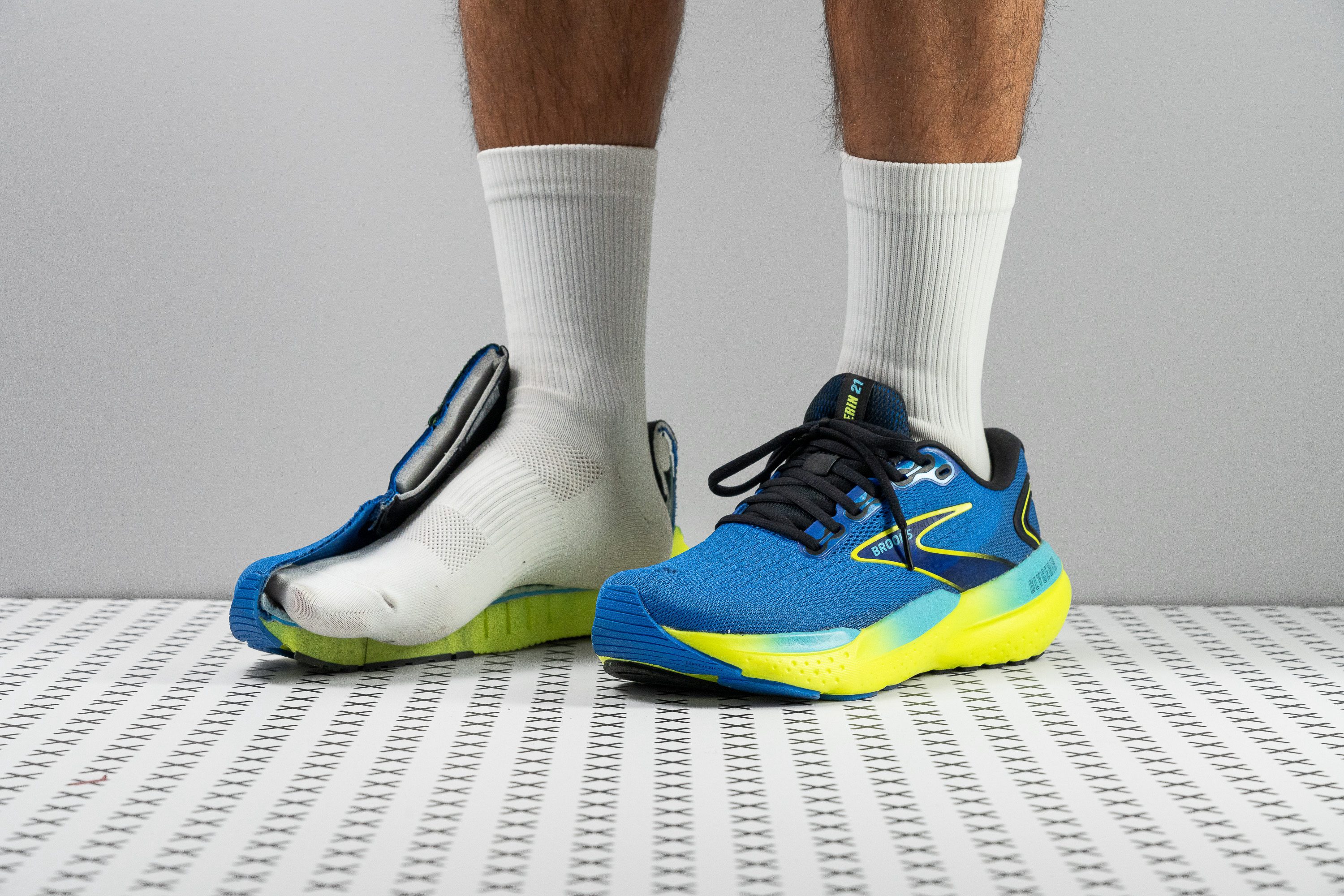Our verdict
- Top pick in best Brooks walking shoes (2024)
Pros
- More cushioning
- Built-like-a-tank outsole
- Ideal for long runs
- Lighter than predecessor
- Comfortable fit
- Great stability
- Supercritical midsole
- Supercritical midsole
Cons
- Slightly warm
- Minor price hike
- Rigid heel counter
Audience verdict
- Top 8% most popular running shoes
Comparison
The most similar running shoes compared
+ + Add a shoe | |||||
|---|---|---|---|---|---|
| Audience score | 86 Good! | 91 Superb! | 87 Great! | 84 Good! | |
| Price | £160 | £165 | £160 | £160 | |
| Pace | Daily running | Daily running | Daily running | Daily running | |
| Shock absorption | High | High | High | Moderate | |
| Energy return | Low | Moderate | Low | Low | |
| Traction | High | Moderate | Moderate | High | |
| Arch support | Neutral | Neutral | Neutral | Neutral | |
| Weight lab Weight brand | 9.8 oz / 278g 9.8 oz / 277g | 9.6 oz / 271g 9.8 oz / 277g | 10.3 oz / 293g 10.2 oz / 289g | 9.1 oz / 257g 10 oz / 283g | |
| Drop lab Drop brand | 10.6 mm 10.0 mm | 10.0 mm 8.0 mm | 10.3 mm 10.0 mm | 10.5 mm 10.0 mm | |
| Strike pattern | Heel | HeelMid/forefoot | Heel | Heel | |
| Size | True to size | True to size | True to size | True to size | |
| Midsole softness | Balanced | Soft | Soft | Balanced | |
| Difference in midsole softness in cold | Normal | Normal | Normal | Normal | |
| Toebox durability | Decent | Good | Decent | Decent | |
| Heel padding durability | Good | Good | Good | Decent | |
| Outsole durability | Good | Bad | Good | Good | |
| Breathability | Moderate | Moderate | Breathable | Warm | |
| Width / fit | Medium | Medium | Medium | Medium | |
| Toebox width | Medium | Medium | Medium | Medium | |
| Stiffness | Moderate | Moderate | Moderate | Moderate | |
| Torsional rigidity | Flexible | Moderate | Stiff | Moderate | |
| Heel counter stiffness | Stiff | Moderate | Moderate | Moderate | |
| Heel lab Heel brand | 37.2 mm 38.0 mm | 40.7 mm 42.0 mm | 38.5 mm 38.0 mm | 36.9 mm 38.0 mm | |
| Forefoot lab Forefoot brand | 26.6 mm 28.0 mm | 30.7 mm 34.0 mm | 28.2 mm 28.0 mm | 26.4 mm 28.0 mm | |
| Widths available | NarrowNormalWide | NormalWide | NormalWideX-Wide | Normal | |
| Orthotic friendly | ✓ | ✓ | ✓ | ✓ | |
| Season | All seasons | All seasons | SummerAll seasons | All seasons | |
| Removable insole | ✓ | ✓ | ✓ | ✓ | |
| Ranking | #379 Bottom 42% | #26 Top 8% | #169 Top 46% | #233 Bottom 37% | |
| Popularity | #51 Top 8% | #206 Bottom 44% | #12 Top 4% | #151 Top 41% |
Who should buy
We think the Glycerin 21 is a superb option for:
- Heel strikers in search of a max-cushioned shoe that can handle every distance in marathon training.
- Those who want a daily trainer with an outsole that endures mileage like few others on the market, maintaining impressive durability.
- Fans of the popular Ghost looking for a slightly more cushioned option while retaining the classic Brooks look and feel.
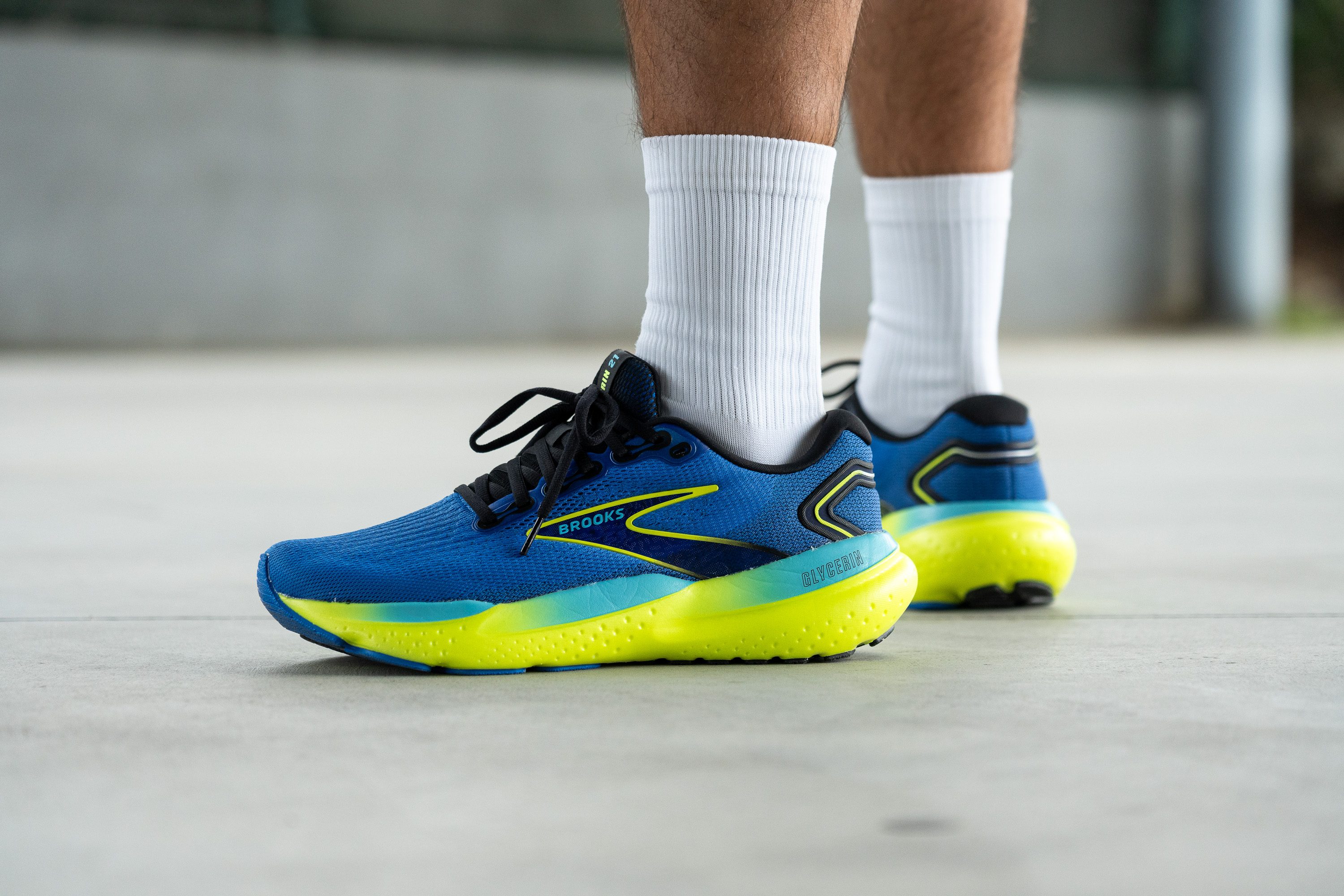
Who should NOT buy
We do not recommend the Glycerin 21 for those living in areas with hot or humid summers—the knit upper, while exceptionally comfortable, offers inadequate ventilation for such conditions. Consider the Hoka Mach 6 instead, which is way better suited for warmer climates.
Additionally, we think the Glycerin 21 is not the best choice for runners who prefer a moderate or low drop shoe, as its high offset primarily benefits heel strikers.

We believe runners would find better footstrike geometry and overall fit in alternatives like the Hoka Clifton 9 or the On Cloudmonster 2, which offer similar cushioning with more suitable mid-drop designs.
Cushioning
Shock absorption
We found 133 SA of shock absorption in the heel during testing. That’s strong proof that plush-heavy daily trainers are no longer niche, but the new normal.
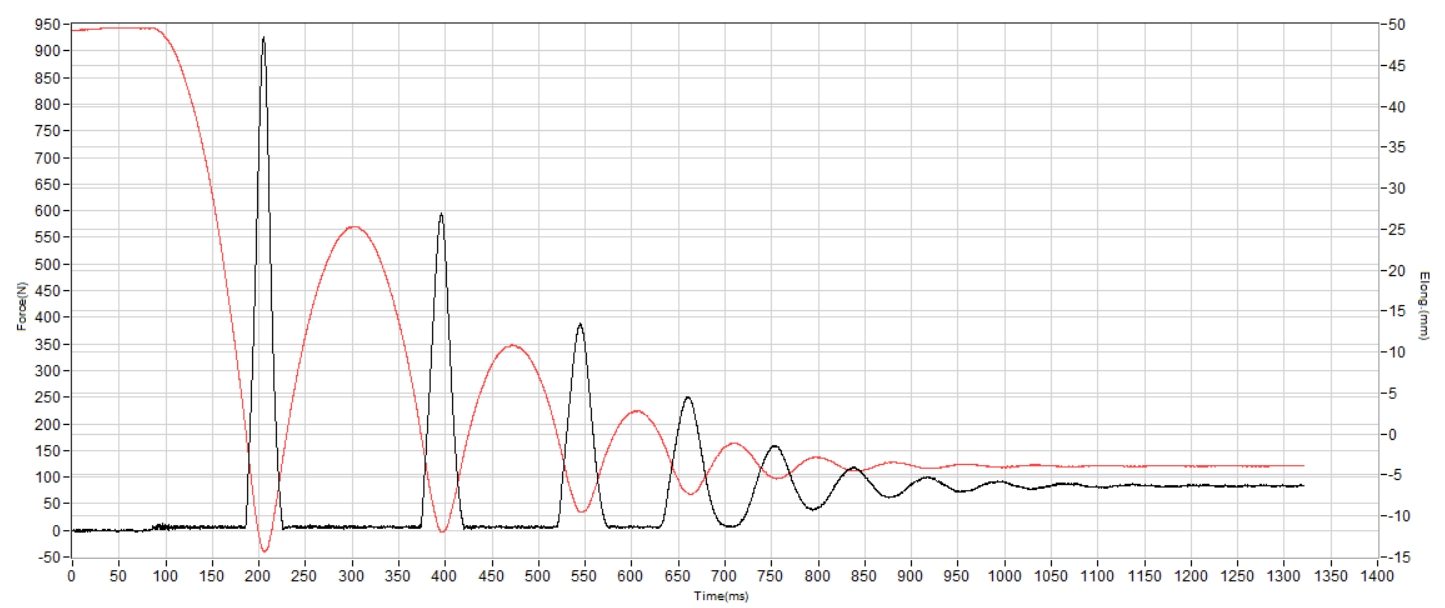
| Glycerin 21 | 133 SA |
| Average | 129 SA |
Energy return
Energy return isn’t the standout feature of the Glycerin 21. It’s not terrible with 53.9% in the heel and 58.3% in the forefoot, but for Brooks’ premium daily trainer, it falls short when compared to rivals like the Nike Pegasus Plus or Adidas Adizero EVO SL.
| Glycerin 21 | 53.9% |
| Average | 58.5% |
Heel stack
We recently mentioned that the v21 is the tallest Glycerin yet, but let's confirm that with precise measurements.
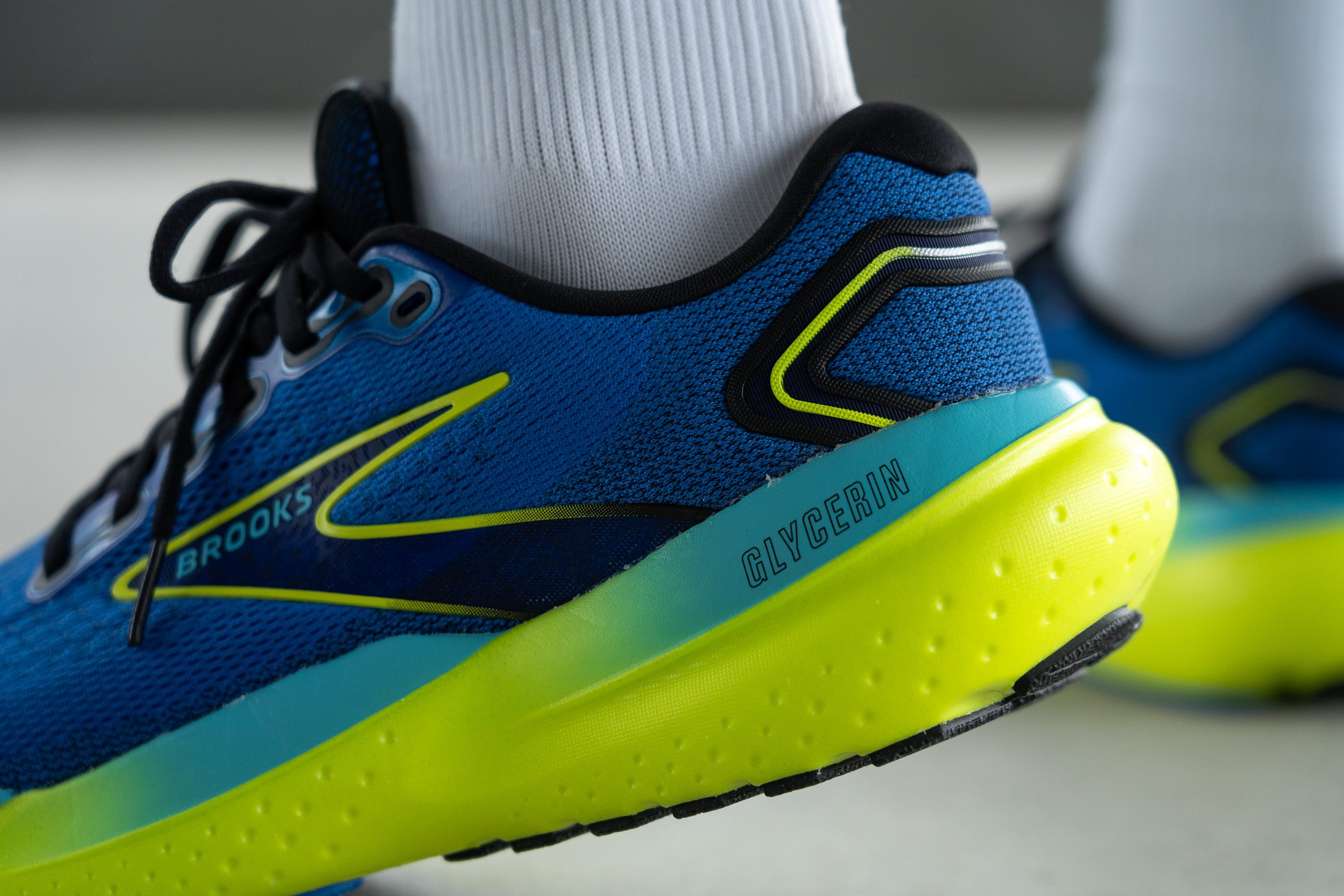
In the heel, we measured 37.2 mm, which categorises the Glycerin as a maximum cushioning daily trainer. However, this makes it less ideal for runners seeking a more ground-connected feel. Those runners might consider the New Balance FuelCell Rebel v4 instead, which offers a closer touch to the terrain.
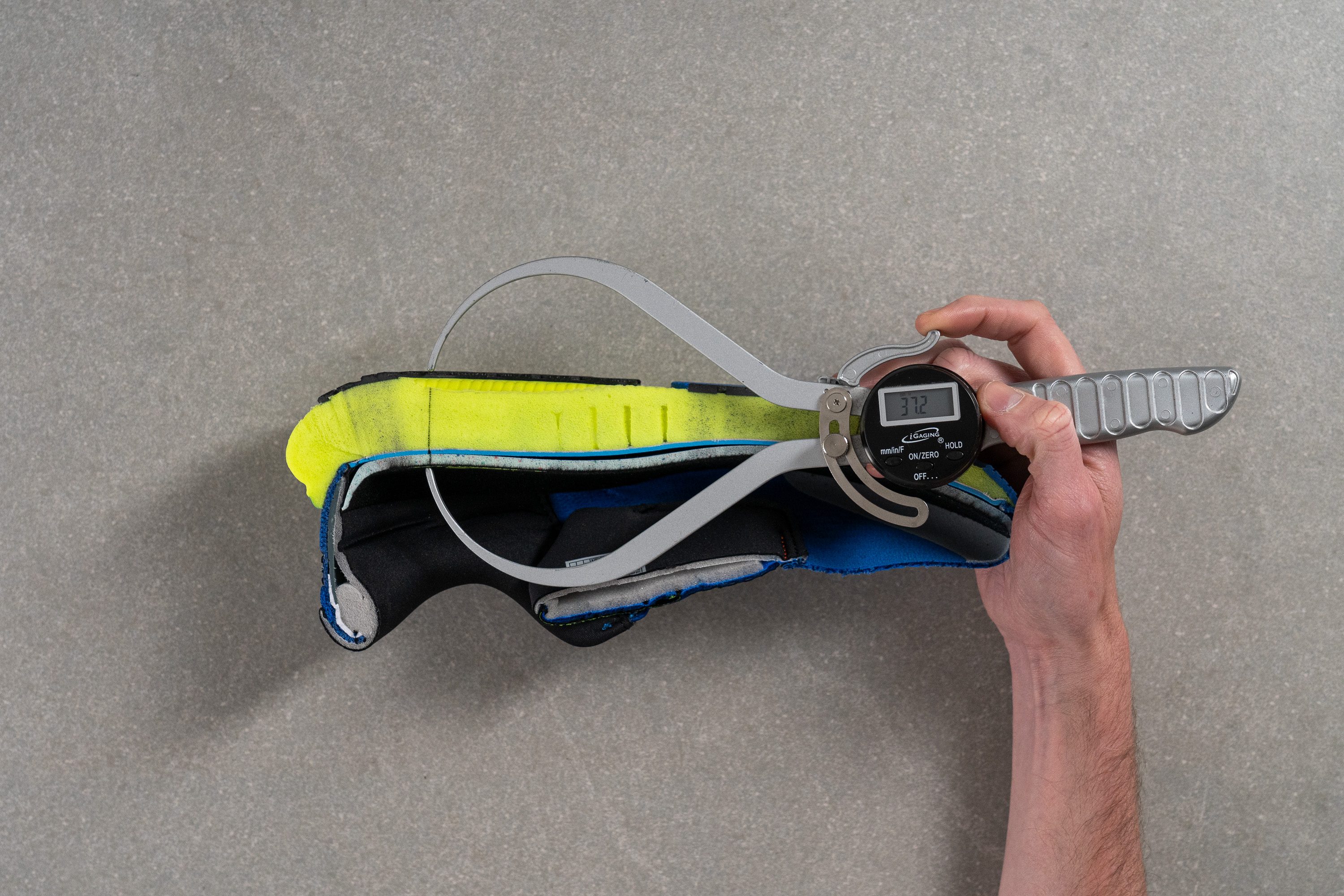
| Glycerin 21 | 37.2 mm |
| Average | 34.8 mm |
Forefoot stack
Moving to the forefoot, we recorded a measurement of 26.6 mm.
While this height is less maximalist compared to the heel and feels more grounded, it still provides ample cushioning under the ball of your foot, suitable for runners of any weight or distance.

| Glycerin 21 | 26.6 mm |
| Average | 26.2 mm |
Drop
The Glycerin series has consistently featured a high difference from heel to toe, and the 21st edition maintains this standard with a 10.6 mm drop.
This positioning makes it an ideal choice for heel strikers seeking luxurious cushioning, yet it also accommodates forefoot or midfoot strikers who prefer a higher-offset running shoe.
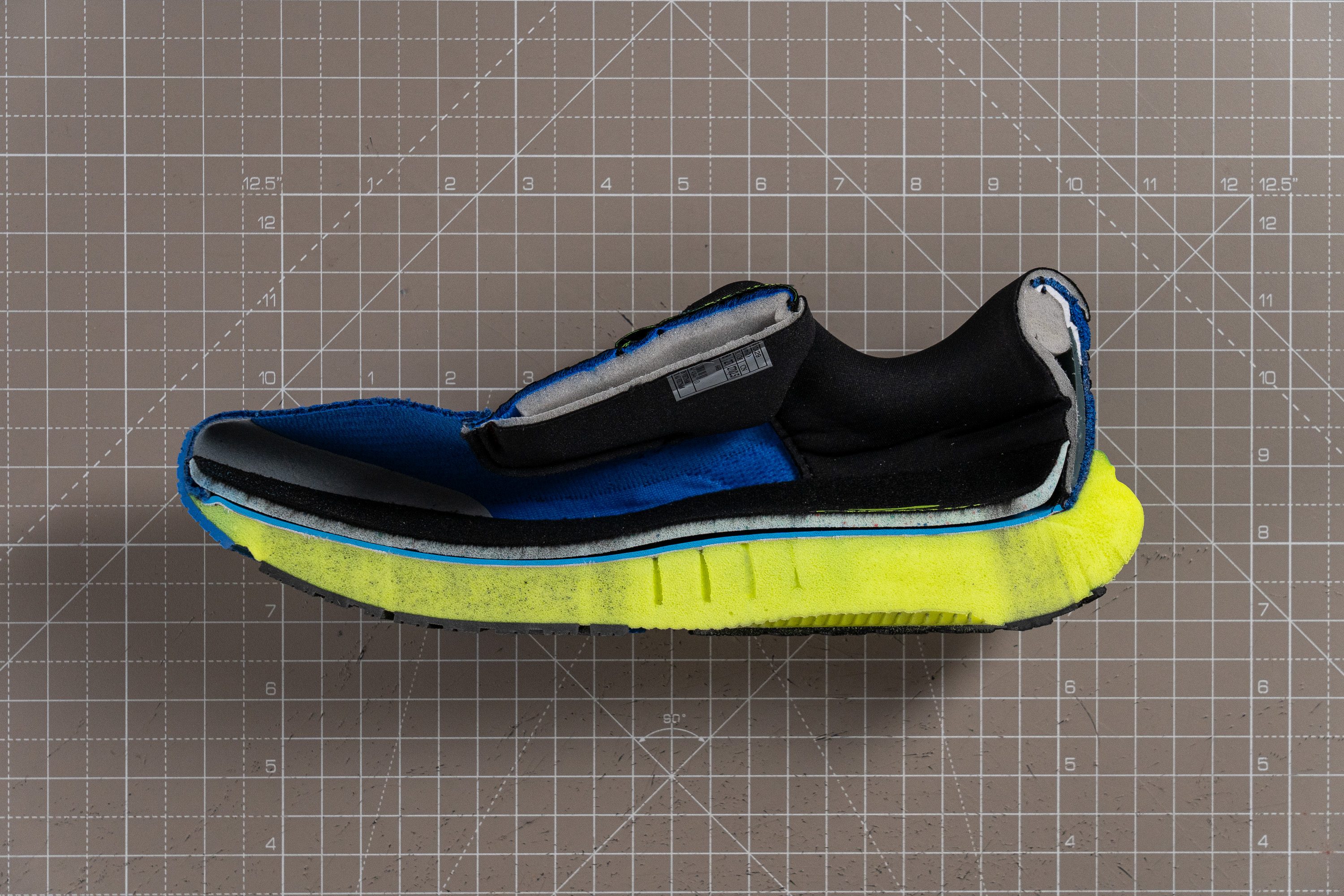
| Glycerin 21 | 10.6 mm |
| Average | 8.6 mm |
Midsole softness
Last year, we discovered that Brooks had upgraded the Glycerin to a supercritical, nitrogen-infused EVA named DNA Loft v3—a significant shift from an average, low-energy-return EVA. This year, the foam remains unchanged and delivers a well-balanced ride that combines a nice touch of bounce with stability under high load.
In our testing, we measured the foam's softness at 20.4 HA, indicating a balanced feel underfoot in terms of softness.
While you shouldn't expect the ultra-plush ride of a Nike Invincible 3, the Glycerin is certainly not firm, which aligns with it being a supercritical, airy midsole.

| Glycerin 21 | 20.4 HA |
| Average | 20.4 HA |
Rocker
While many maximalist running shoes like the Hoka Cielo X1 are adopting a rockered geometry, the Glycerin maintains a classic shape that delivers a natural running feel.
We believe that it's beneficial for everyone to have alternatives to suit different preferences, right? According to our tests, the Glycerin continues to provide a flexible ride that stands out in a sea of rockered options.
Size and fit
Size
Brooks Glycerin 21 fits true to size (1060 votes).
Width / Fit
Our first measurement is always taken at the widest part, and the Glycerin measured an average of 95.9 mm, comfortably accommodating most runners.
As a shoe for everyday miles, it's no surprise it registered around the average.
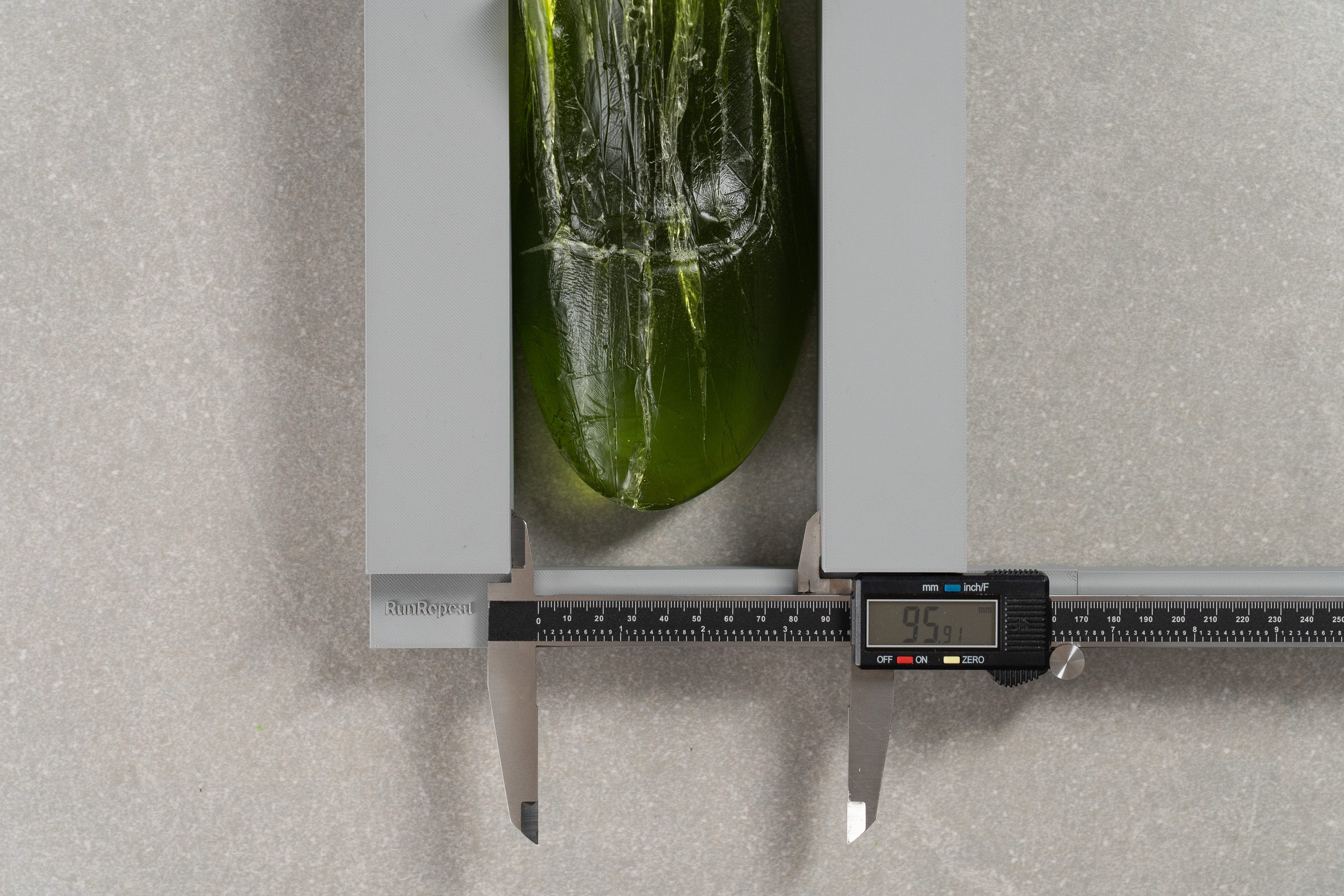
| Glycerin 21 | 95.9 mm |
| Average | 95.1 mm |
Toebox width
We focused on the second measurement to evaluate toebox space, as overly tapered designs can significantly affect comfort. This holds true for the Glycerin 21, where Brooks retained its usual tapered toebox design, which contrasts sharply with an anatomical or foot-shaped toebox like those from the American brand Altra.
Using our callipers, we measured this area at 71.7 mm, confirming its narrower fit, which may pose a challenge for those with square-shaped feet.
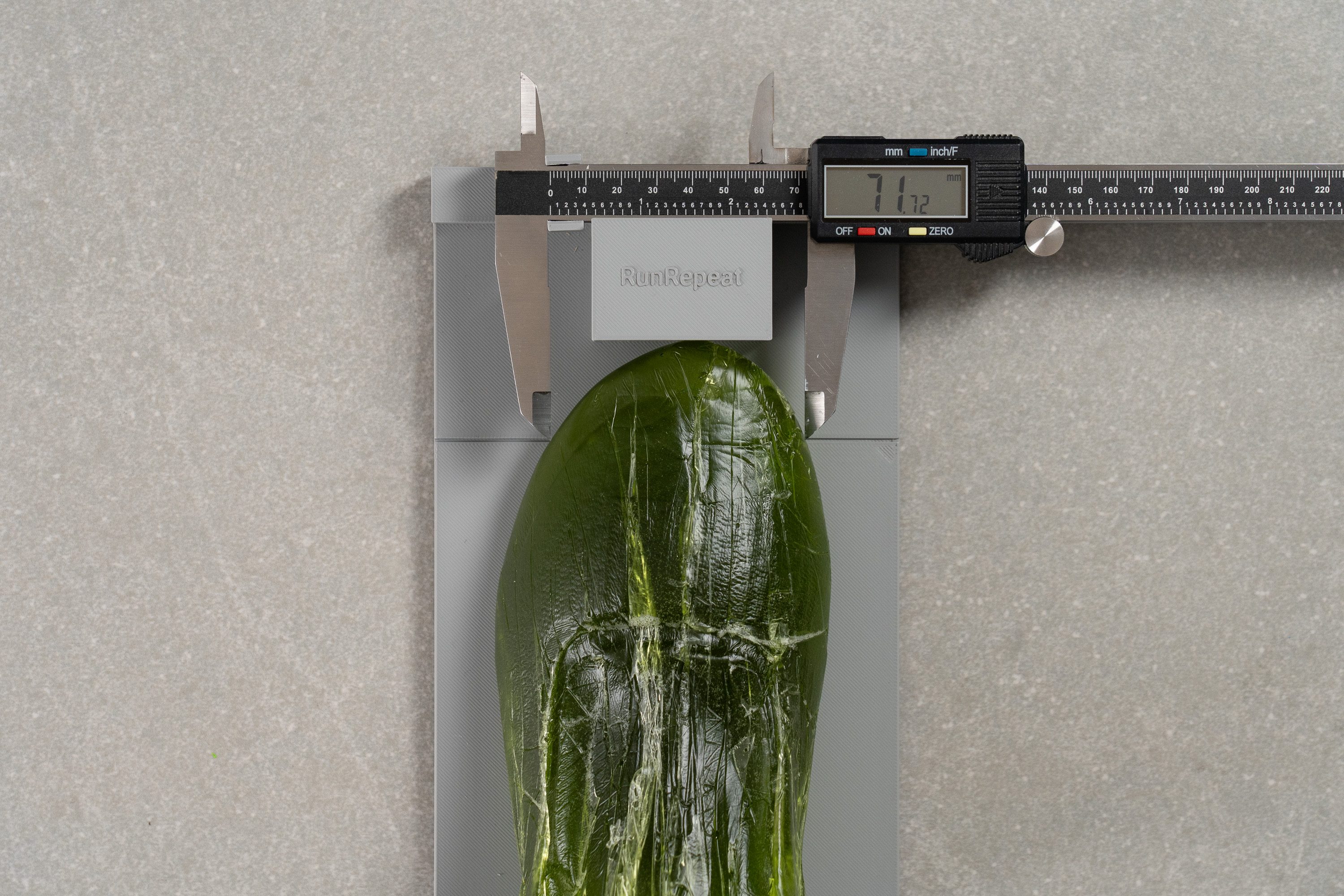
| Glycerin 21 | 71.7 mm |
| Average | 73.3 mm |
Toebox height
Our final measurement using the gel mould focused on toebox height. Based on our findings, 26.4 mm should work for most runners, but those seeking more vertical space for toe movement might prefer models like the Adidas Supernova Rise.

| Glycerin 21 | 26.4 mm |
| Average | 27.1 mm |
Traction / Grip
Traction test
Wet roads and drizzles shouldn't stop you from running in the Brooks Glycerin 21.
Having tested the shoe's forefoot grip with a SATRA TM144 method, we can confirm that it has enough bite to keep you steady when making a sharp turn on wet concrete. The shoe's coefficient of friction came in at 0.48 which is within a standard range for road running shoes.
| Glycerin 21 | 0.48 |
| Average | 0.48 |
Outsole design
Brooks uses a compound named Roadtack Rubber—a staple known for its durability.
The rubber thoroughly covers all high-wear areas in the heel and forefoot, and although there are some exposed foam spots, they’re not a concern for us. Still, it definitely has less rubber coverage than version 20!
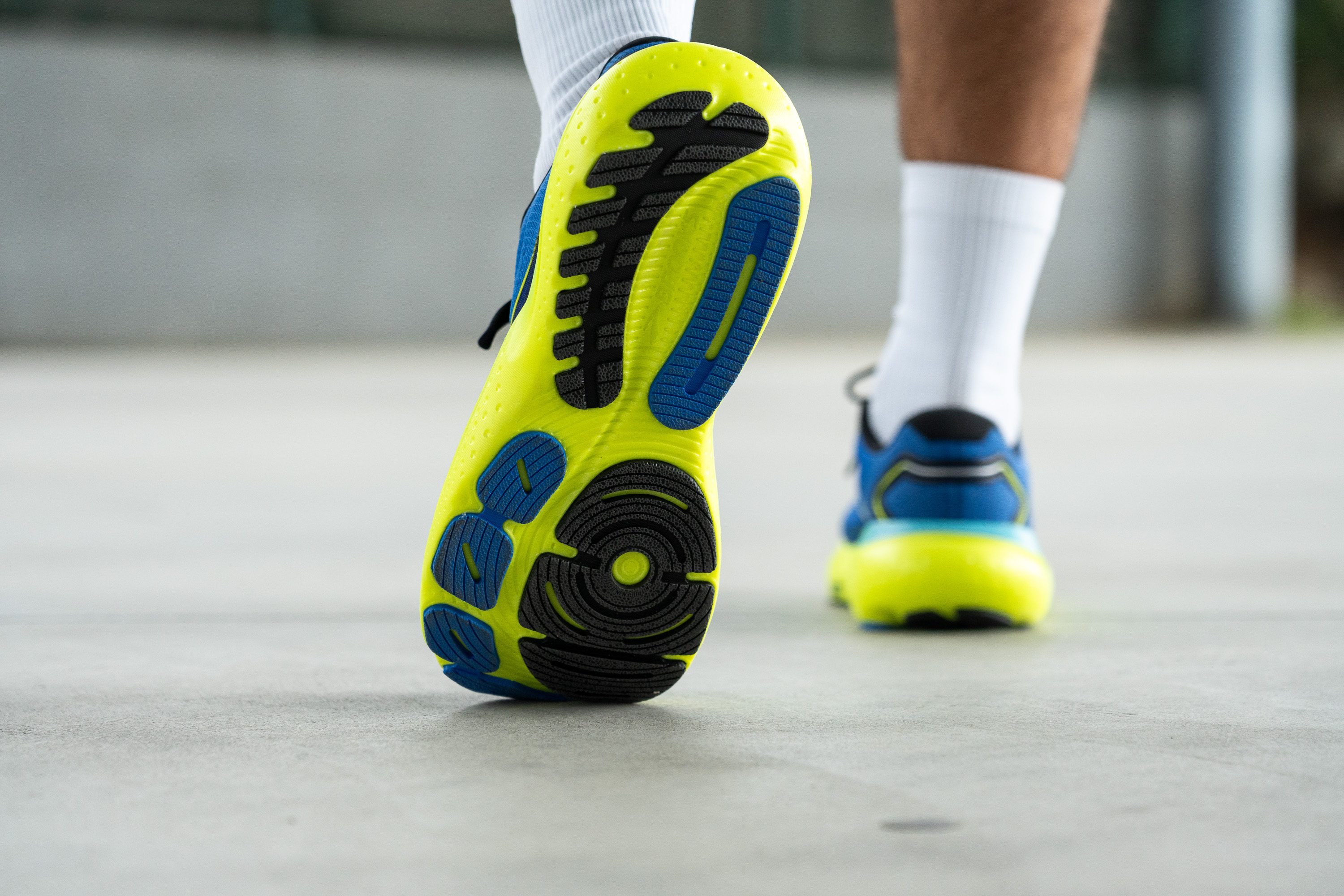
Flexibility / Stiffness
This test is crucial for a versatile shoe like the Glycerin 21, as a very stiff sole could compromise its comfort and daily utility. To assess this, we conducted our signature 30-degree bend test.
We were pleased with the results—our force gauge recorded just 12.3N, placing it comfortably in the flexible range, though it's a bit stiffer than its predecessor. This outcome ensures the shoe is well-suited for everyday runs and versatile enough for activities like walking the dog or serving as a go-to travel shoe.
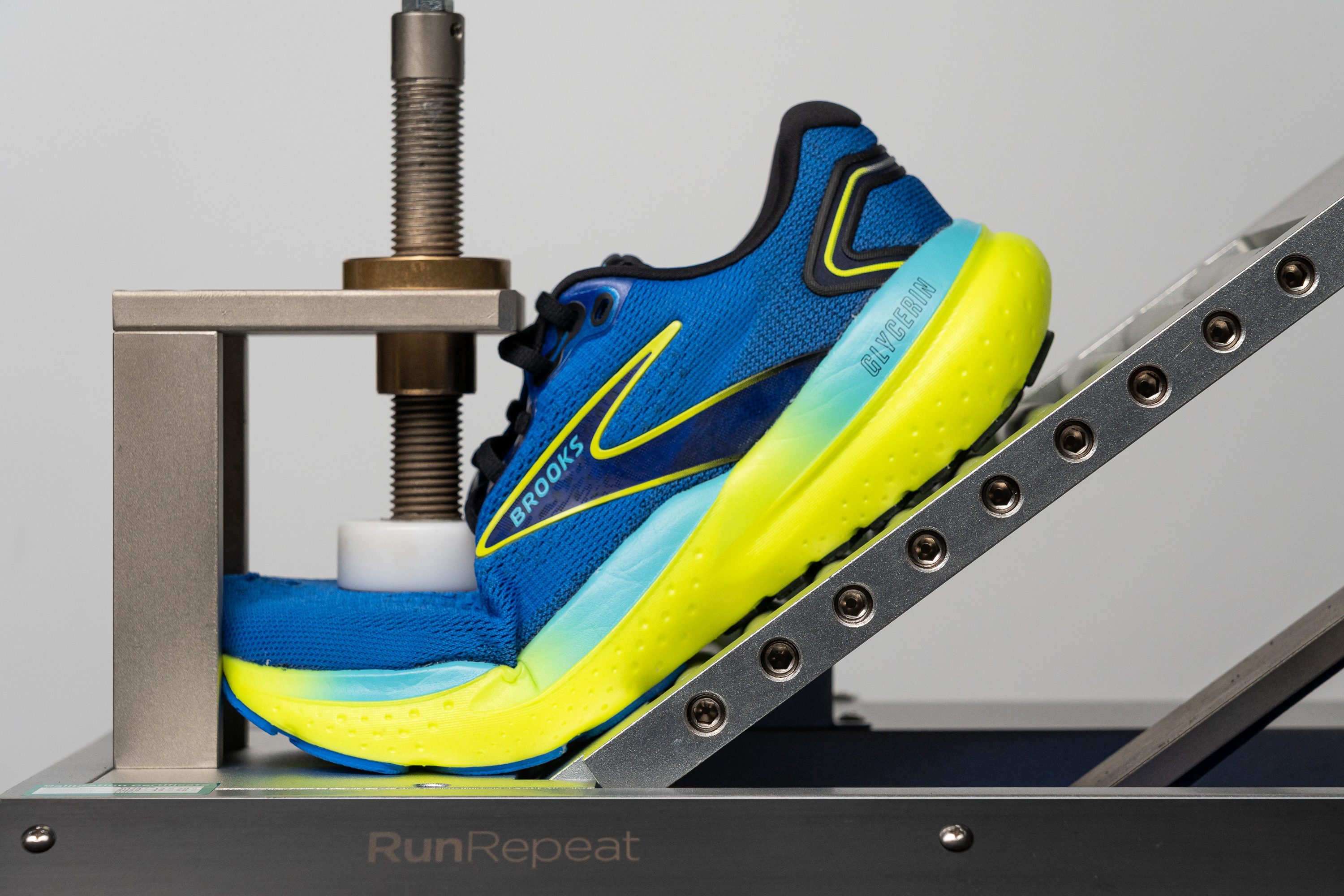
| Glycerin 21 | 12.3N |
| Average | 15.3N |
Stiffness in cold (%)
A nitrogen-injected EVA compared to standard EVA provides several advantages, including reduced weight, enhanced energy return, and quicker decompression. However, some often overlook another benefit—the stiffness variation in cold temperatures.
Thanks to the supercritical process, the stiffness of the material after spending 20 minutes in our freezer changed by only 14.5%, which is a favourable outcome.
| Glycerin 21 | 15% |
| Average | 33% |
Weight
Speaking of weight, the Glycerin 21 achieved an excellent result on our scales, coming in below the 10-oz benchmark—this is the ideal weight range for a maximalist daily running shoe to be considered light enough. And it certainly hits the mark at 9.8 oz or 278g.
In fact, it's the most cushioned Glycerin yet, and it's lighter than its predecessor despite boasting a knit upper, making it a clear win-win in our books!
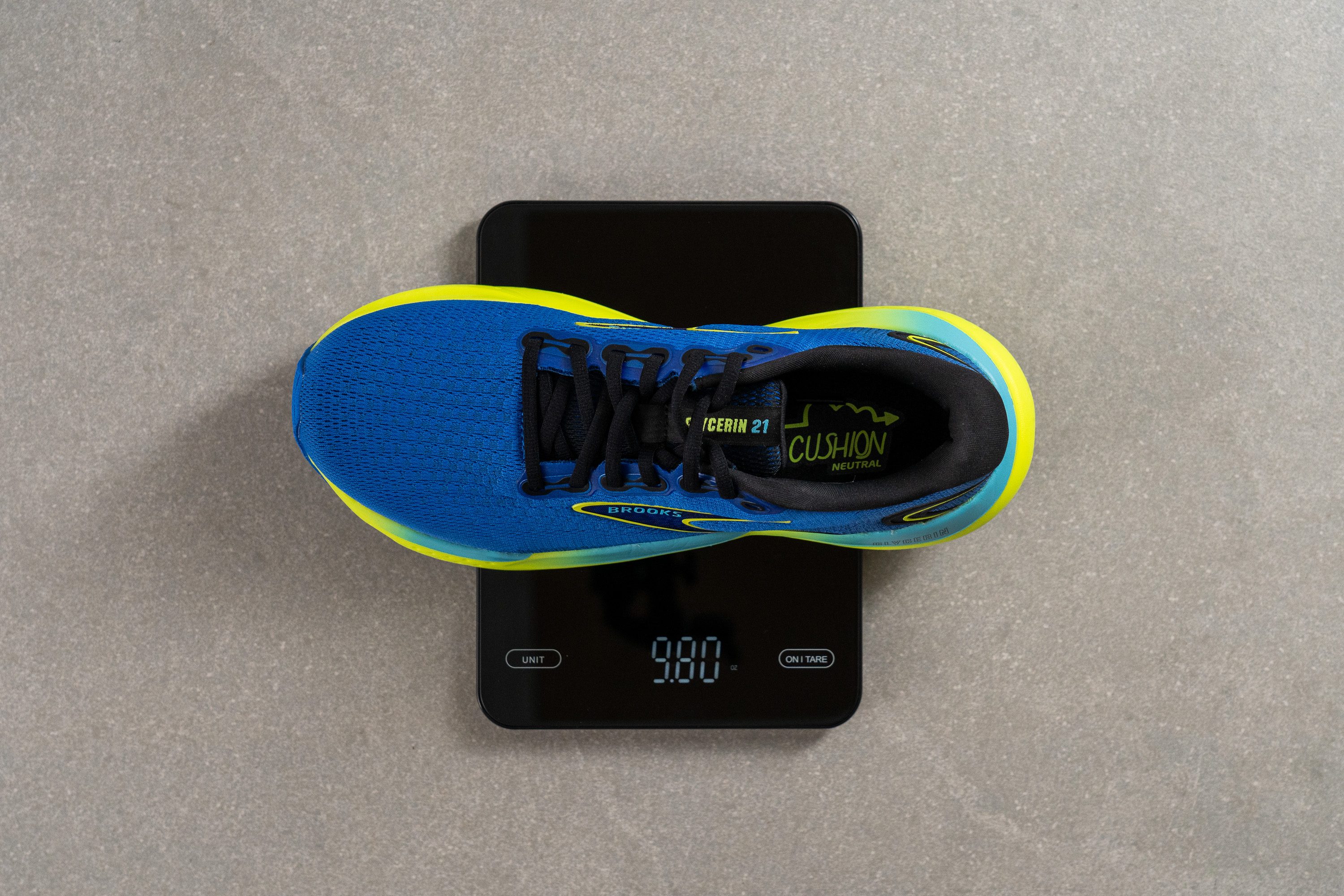
| Glycerin 21 | 9.8 oz (278g) |
| Average | 9.3 oz (264g) |
Breathability
The upper of the Glycerin 21 initially appears incredibly comfortable, though it doesn't seem well ventilated, being made from a thick knit. However, we'll see how it performs with our smoke-pumping machine test.
The results were mixed. We rated the Glycerin 21 a 3/5, surprisingly higher than we anticipated for such a thick upper. Still, it's apparent that the shoe runs warm, and we wouldn't recommend it for hot summer runs.
To gain a deeper understanding, we examined the sliced shoe under our light, where it became clear—very little light penetrated through, indicating the significant thickness of the knit. Brooks clearly prioritised comfort above all else.

For an even closer look, we put the knit upper under a microscope. We observed a super-thick material with no obvious ventilation holes, only minor gaps insufficient for adequate airflow.
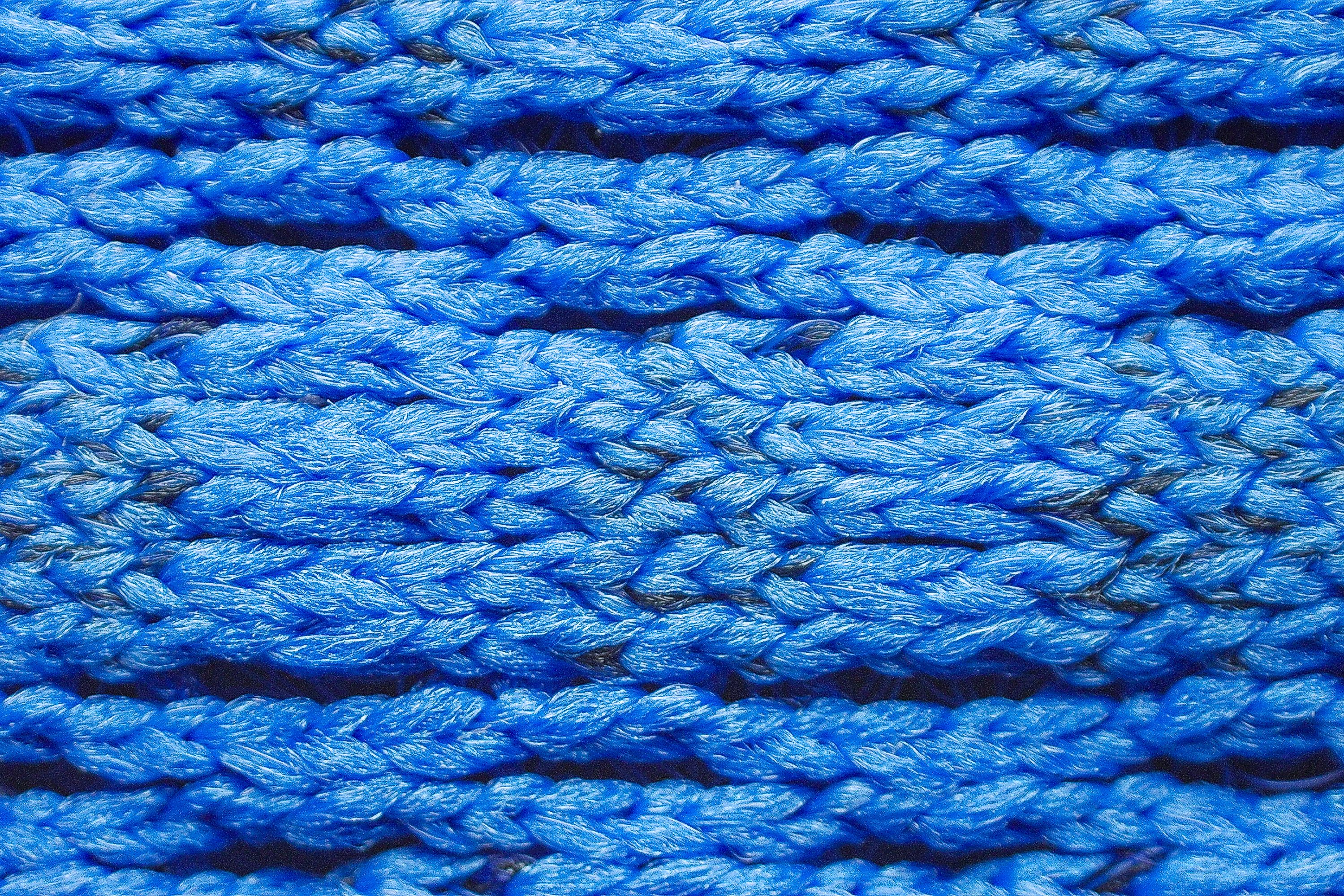
As we noted earlier, the thick upper does have its benefits, primarily comfort, which we felt during our manual assessment. And we also found incredible padding in the tongue and heel.
| Glycerin 21 | 3 |
| Average | 3.7 |
Stability
Lateral stability test
If you're searching for a stable, max-cushioned neutral trainer, the Glycerin is an excellent choice, as it offers a more controlled ride compared to other models in its category.
Although it lacks prominent midsole sidewalls or GuideRails like the Glycerin GTS 21—check this one if you have stability concerns—we discovered that it performs better than ever for neutral runners.
We also found that this improvement stems from mostly from the sole's massive, broad dimensions, coupled with a few clever tweaks that we'll explain in a minute.
Torsional rigidity
We previously mentioned that the Glycerin is a neutral workhorse and that it's not designed as a stability shoe. The primary reason for this classification is its impressive flexibility, which contrasts with the stiff and rigid midsoles of stability-focused shoes like the Hoka Gaviota 5.
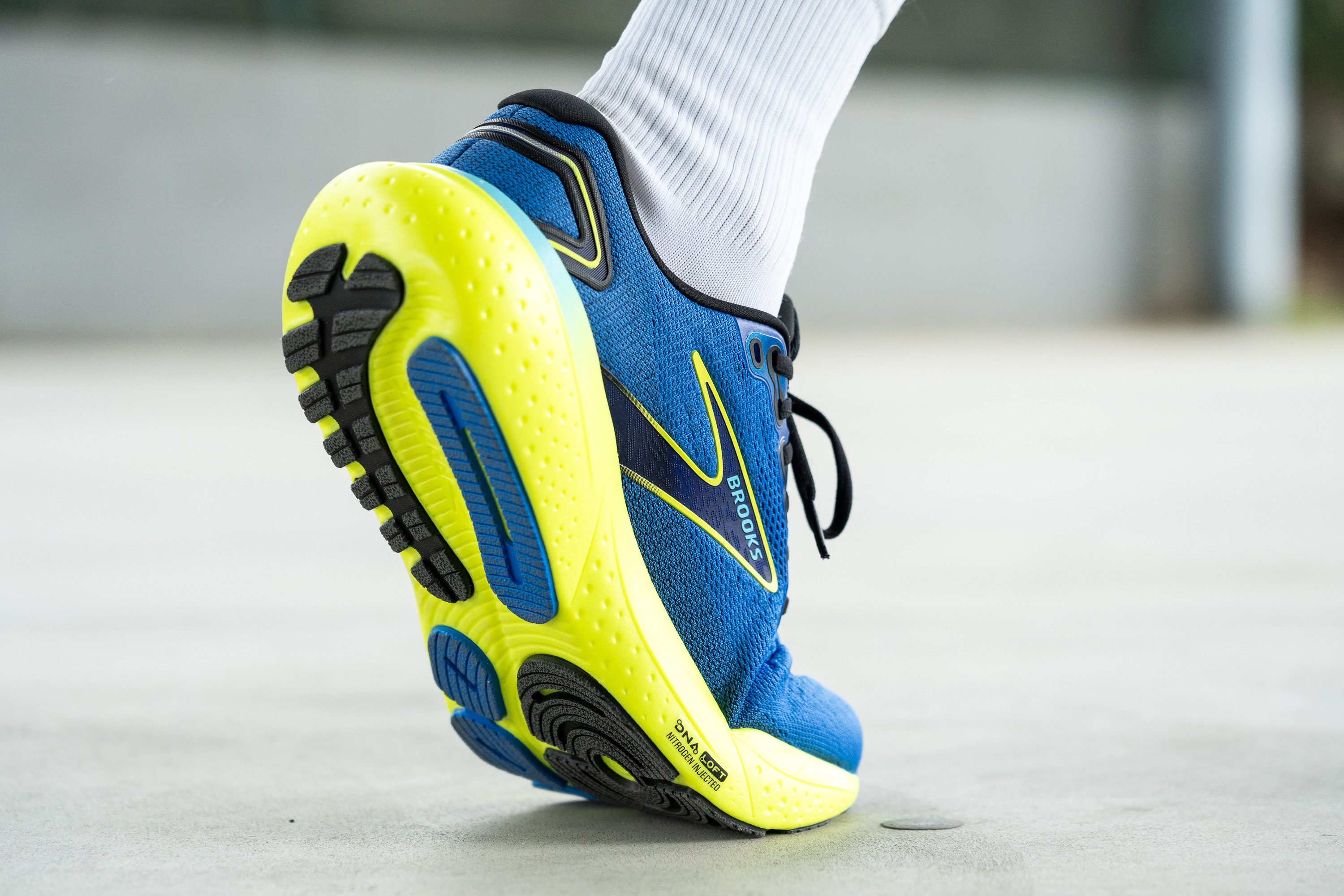
This flexibility resulted in a score of only 2/5 in our torsional rigidity test, affirming that the Glycerin truly offers a natural feel and adapts smoothly to the feet with every stride. This characteristic is highly positive, and we're hopeful that the Glycerin will maintain these qualities for many years to come.
| Glycerin 21 | 2 |
| Average | 3.5 |
Heel counter stiffness
One of those subtle yet impactful tweaks we previously mentioned is evident here, and it might not be to everyone's liking. The stiffness of the heel counter has increased from a moderate 3/5 in the v20 to an iron-hard 5/5 in this latest update.
What does this mean? Essentially, the shoe is now even more tailored for heel strikers, as those who land on their rearfoot first will find that it effectively guides the foot in a straight line. However, this increased rigidity can be a double-edged sword in terms of comfort, as such a stiff heel might feel somewhat intrusive and uncomfortable for some runners.
| Glycerin 21 | 5 |
| Average | 2.9 |
Midsole width - forefoot
Another trick for enhancing stability stems from the shoe's dimensions.
In the forefoot, we measured 117.2 mm, which is slightly wider than your average daily trainer, yet it feels quite standard to us for a maximalist shoe. So, the key must lie in the heel, right?
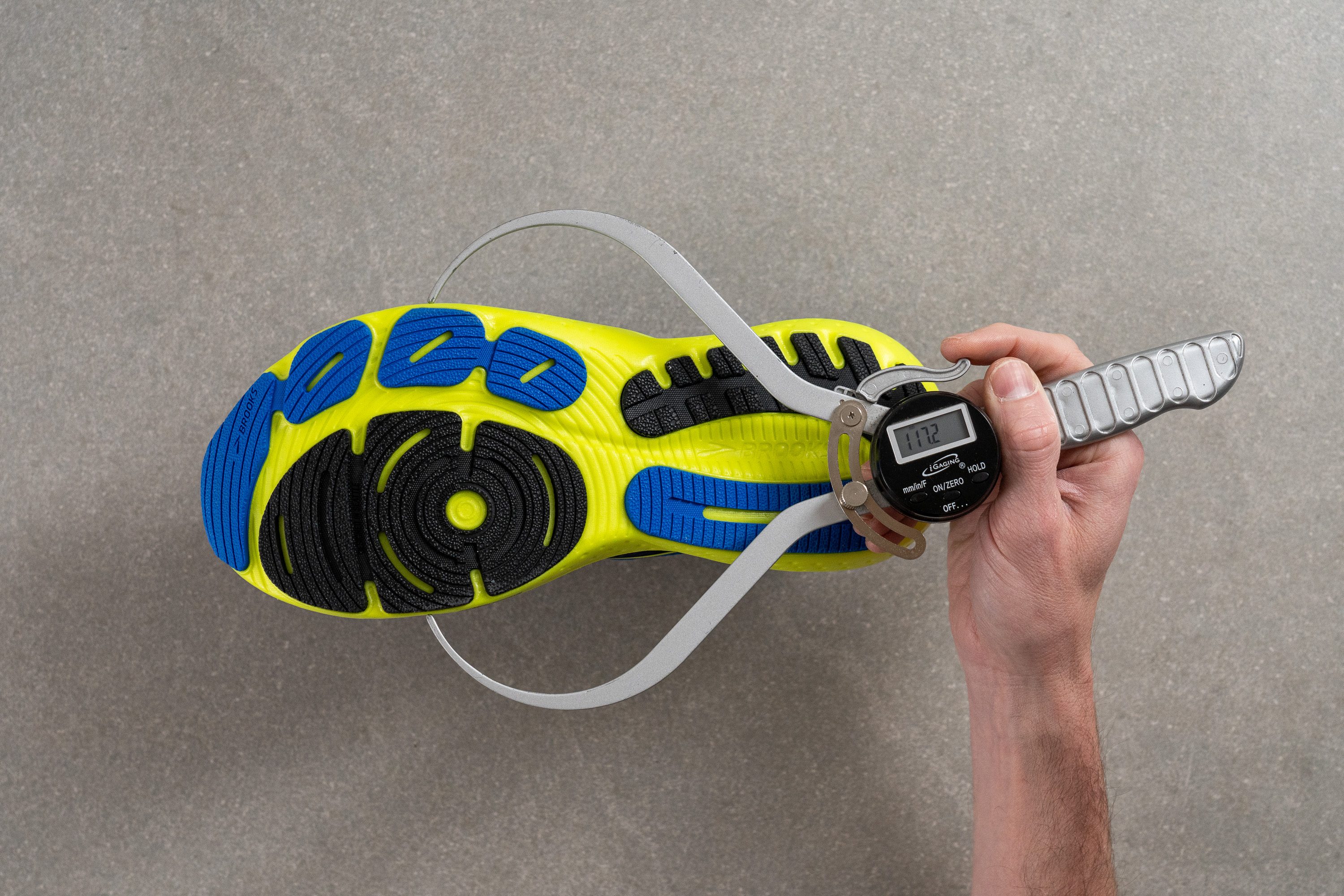
| Glycerin 21 | 117.2 mm |
| Average | 114.4 mm |
Midsole width - heel
Indeed! At 100.0 mm, the heel is impressively broad, offering a substantial landing platform for heel strikers.
Combined with the rigid heel counter and the significant heel-to-toe drop, it's clear to us that Brooks has intentionally designed this shoe to cater specifically to runners who land heavily on their heels.
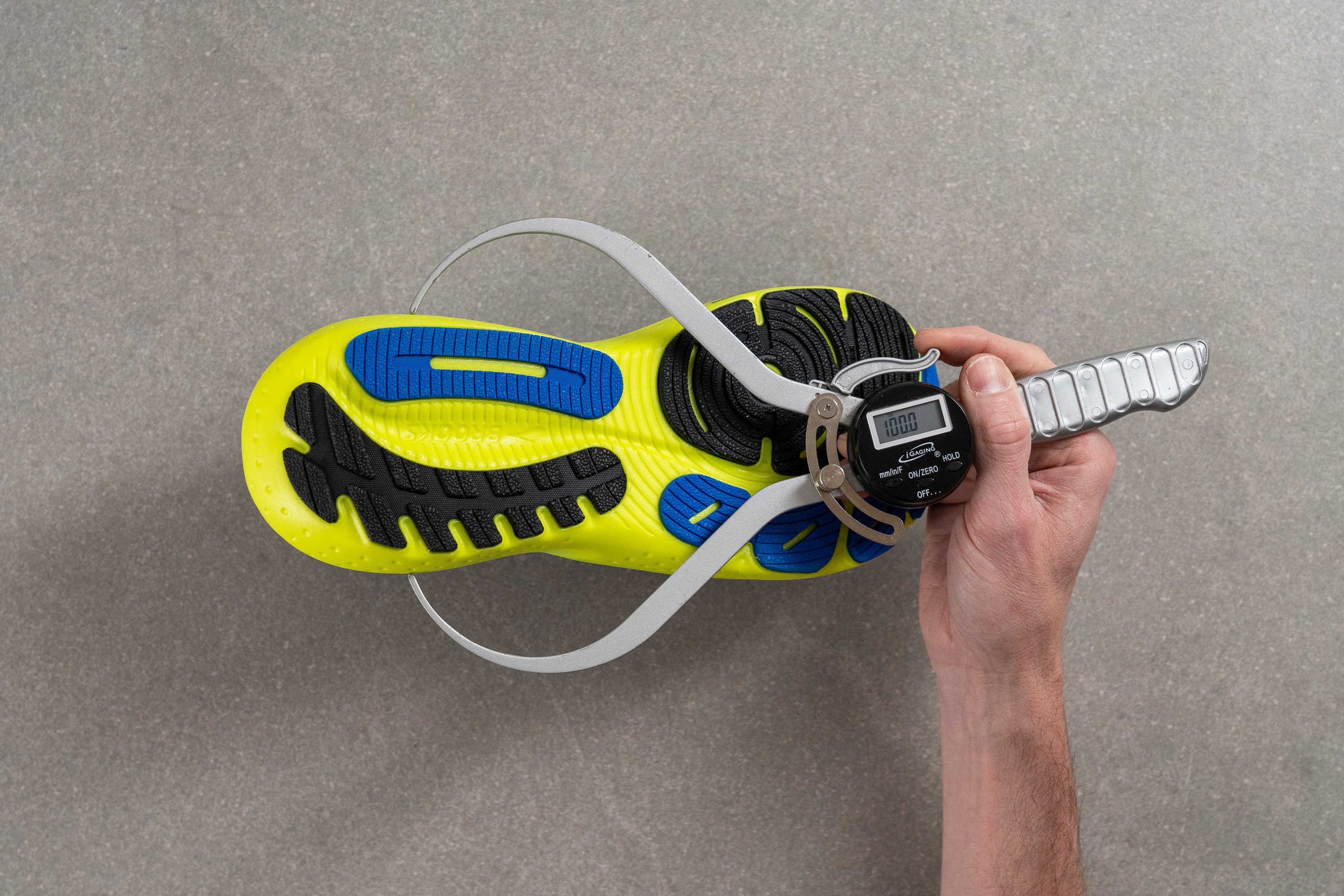
| Glycerin 21 | 100.0 mm |
| Average | 90.7 mm |
Durability
Toebox durability
As we've outlined in our guide about uppers in running shoes, using knit offers advantages like comfort, but typically, durability is compromised since rougher, synthetic materials like engineered mesh are generally more resistant to damage.
Our findings with the Dremel confirmed this. Scoring just 2/5, we can't deem this a positive outcome, though it aligns with our expectations given the Glycerin's plush upper.
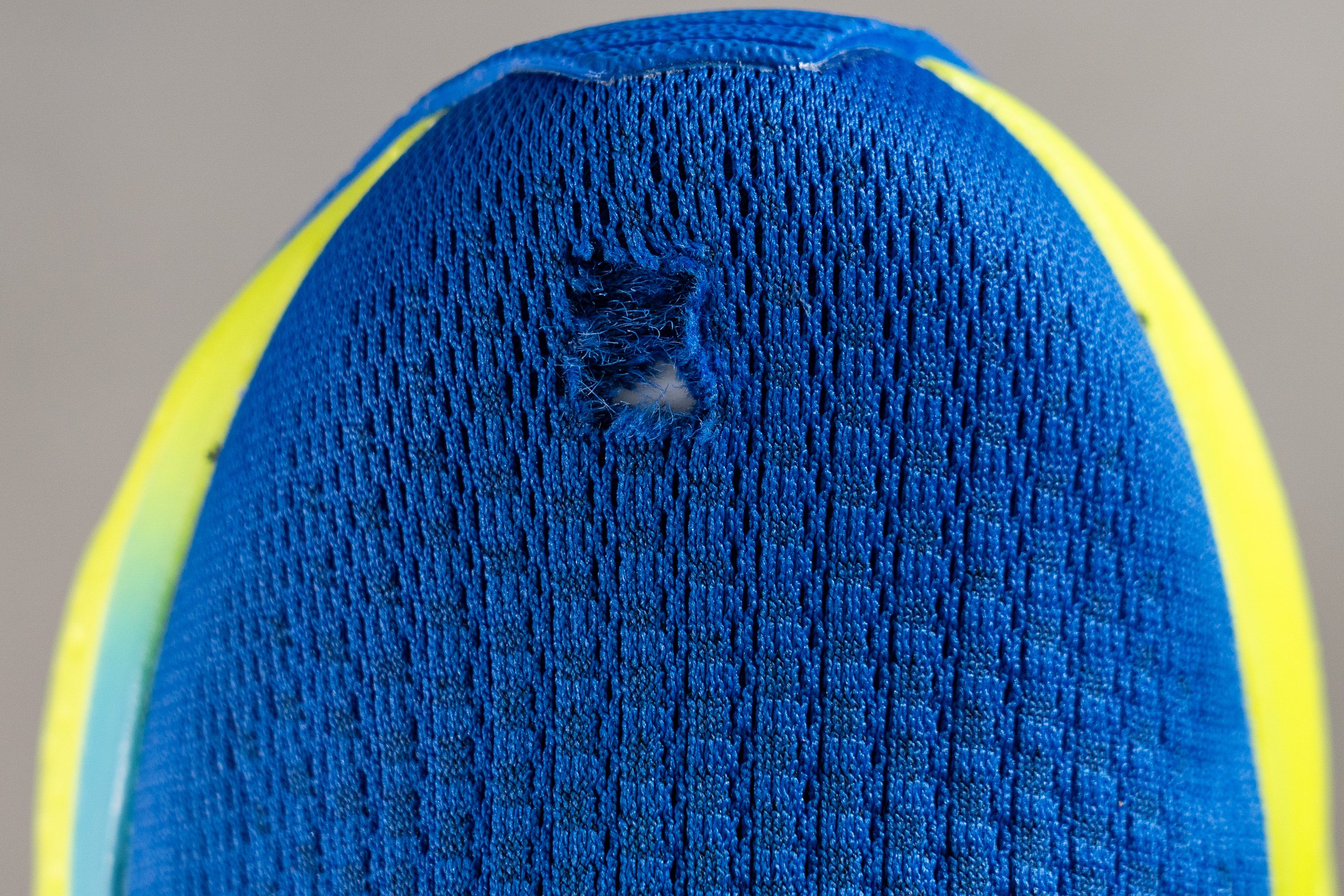
| Glycerin 21 | 2 |
| Average | 2.6 |
Heel padding durability
After completing the assessment in the toebox, we moved to the heel padding—an area of significant concern for runners who often experience wear and tear in this spot.
To our delight, the performance here was way better than in the toebox. After letting the Dremel run for 5 seconds, we observed minimal damage, prompting us to award the Glycerin 21 a solid 4/5 rating.
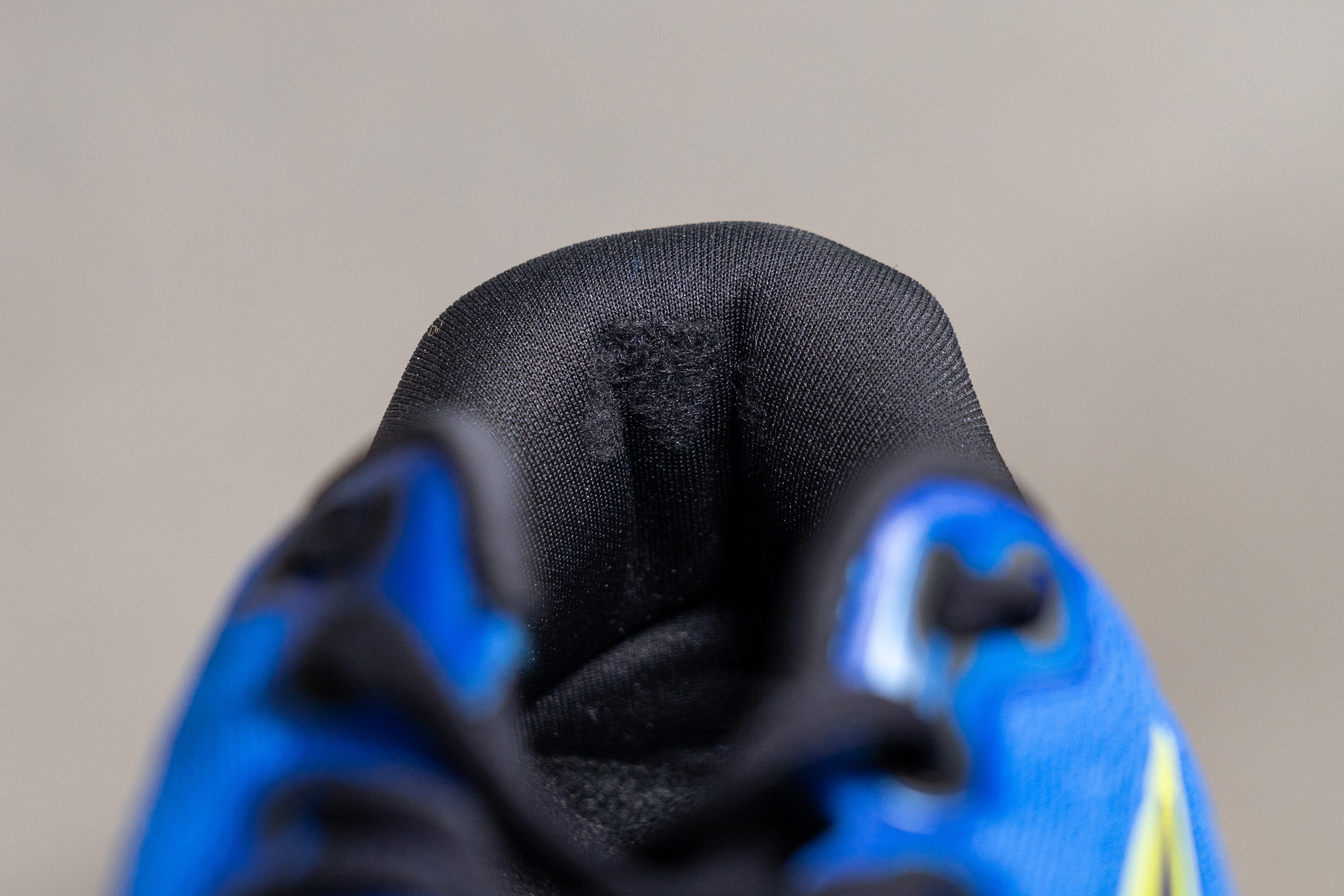
| Glycerin 21 | 4 |
| Average | 3.4 |
Outsole hardness
Moving to the outsole, we began by testing the hardness of the Roadtack Rubber, a staple of Brooks known for its durability.

Our initial assessment seems to confirm its reputation, as the hardness measured at 84.9 HC suggests it can provide substantial mileage for those seeking a shoe that lasts well beyond a few hundred miles. Let's fire up the Dremel one more time!
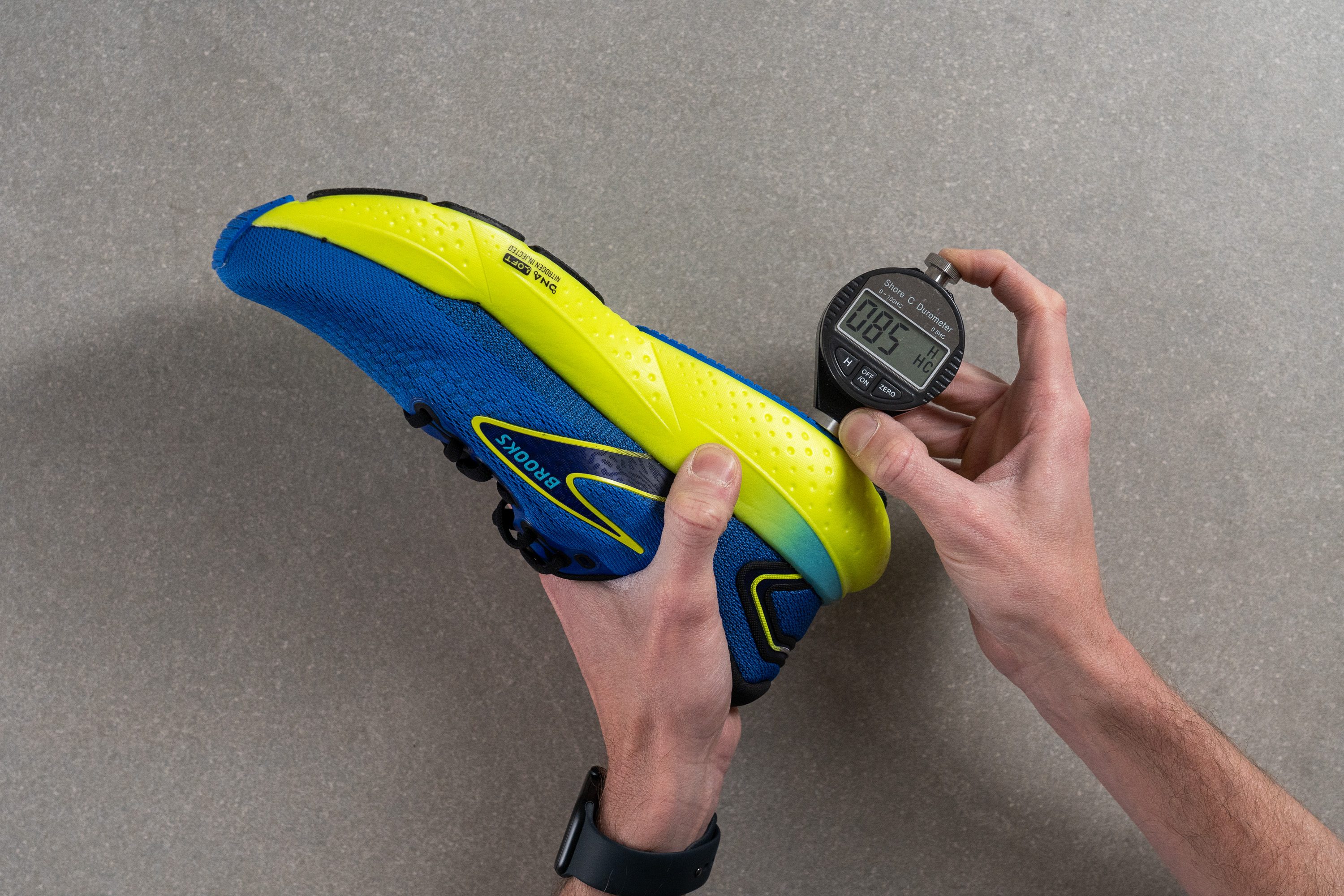
| Glycerin 21 | 84.9 HC |
| Average | 79.2 HC |
Outsole durability
It turns out it's incredibly durable!
Even after the Dremel worked really hard over the rubber, we only observed a minor indentation of 0.5 mm—truly a desired outcome for a daily trainer.
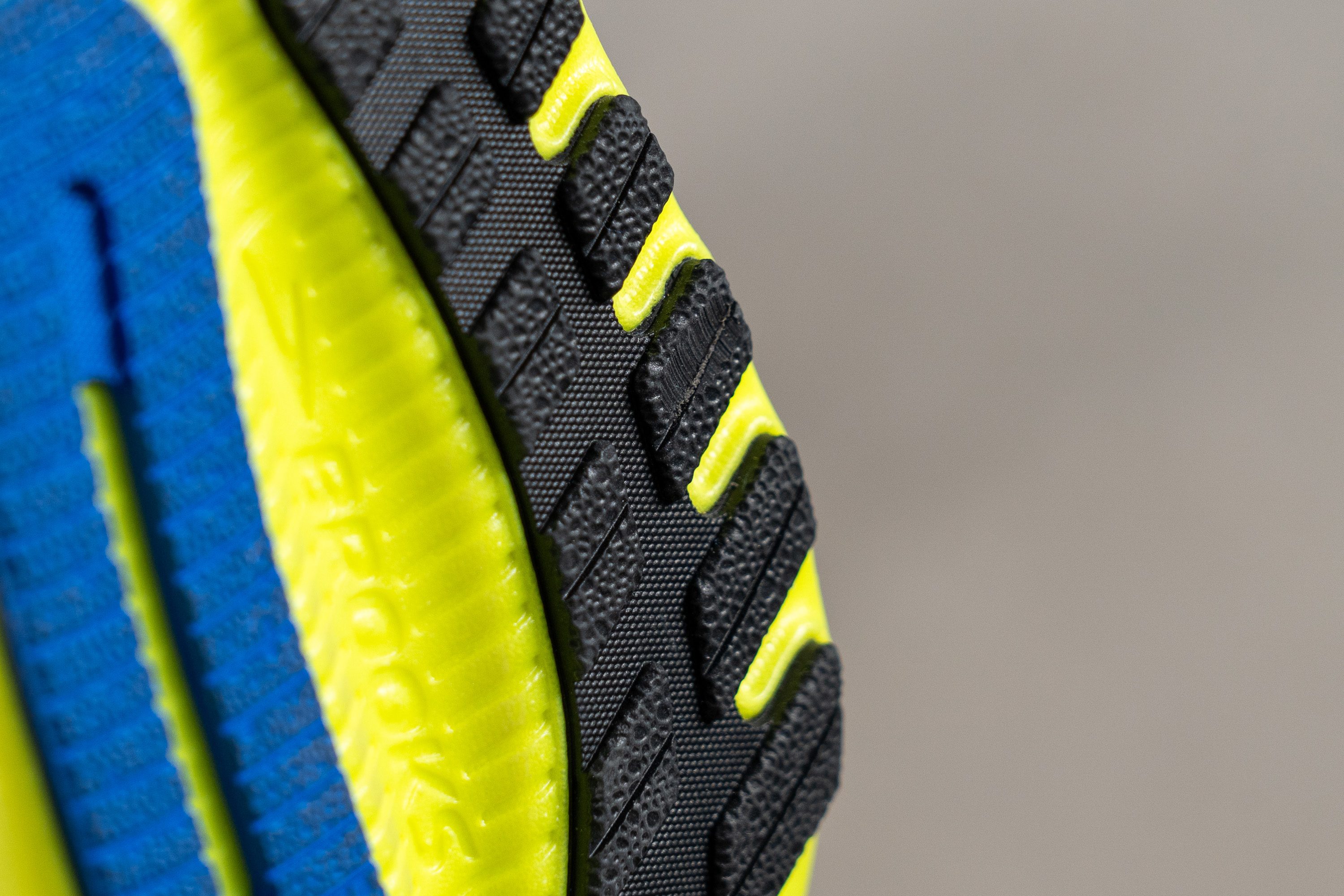
| Glycerin 21 | 0.5 mm |
| Average | 1.1 mm |
Outsole thickness
Any doubts about the outsole's durability were immediately dispelled by our final measurement in this area.
We discovered a thickness of 3.2mm, which actually seems excessive given the rubber's outstanding performance against the Dremel. For the v22, we suggest that Brooks could reduce the thickness by ~1 mm, which would still provide enough durability while making the Glycerin even lighter.
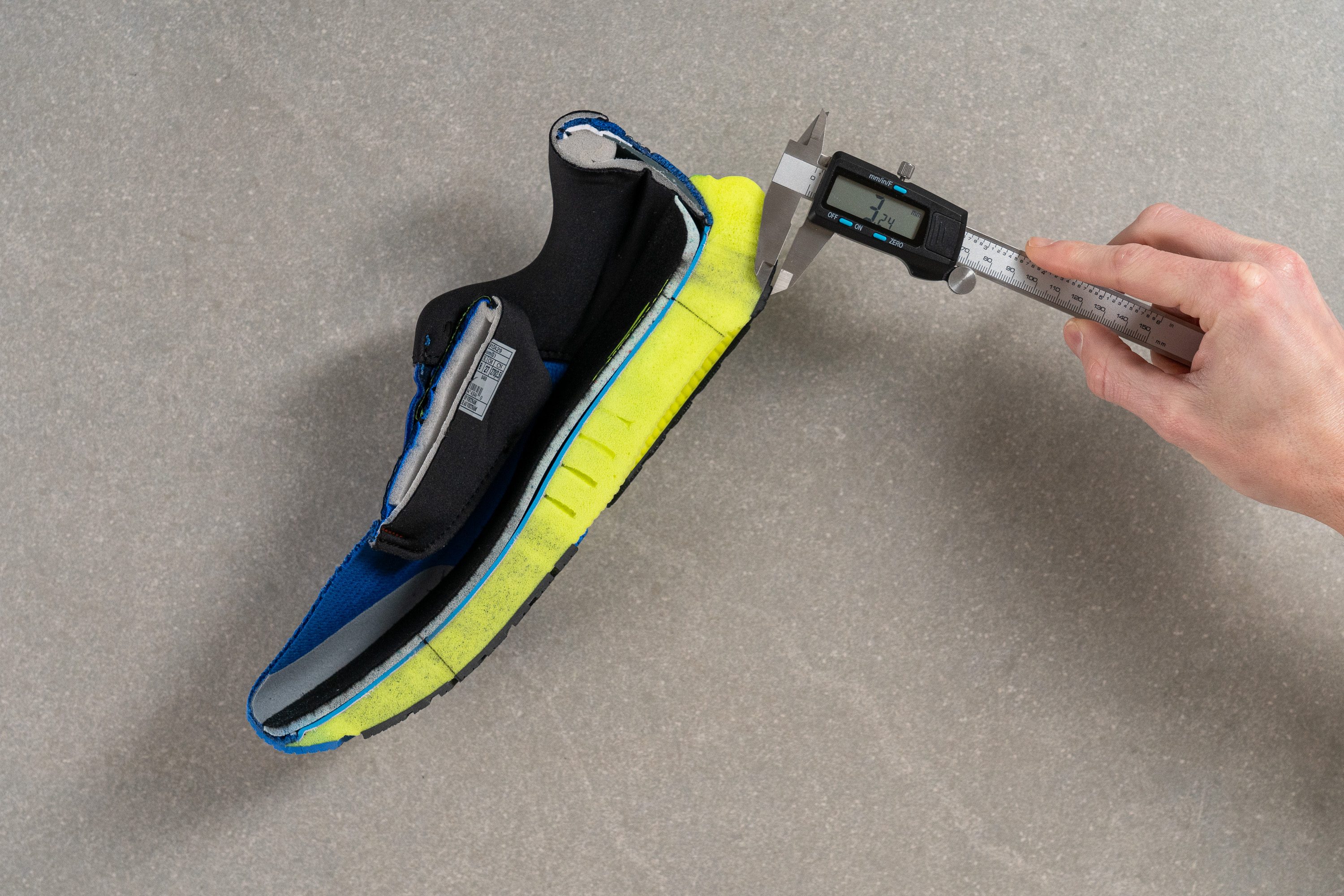
| Glycerin 21 | 3.2 mm |
| Average | 3.2 mm |
Misc
Insole thickness
After evaluating the midsole, we shifted our focus to the insole, which is often overlooked in many running shoe reviews, yet we consider it a crucial component of comfort. After all, your feet rest directly on it, not on the midsole!
We encountered a fairly standard EVA insole measuring 4.8 mm thick. It's straightforward and functional, offering basic performance without any standout features.
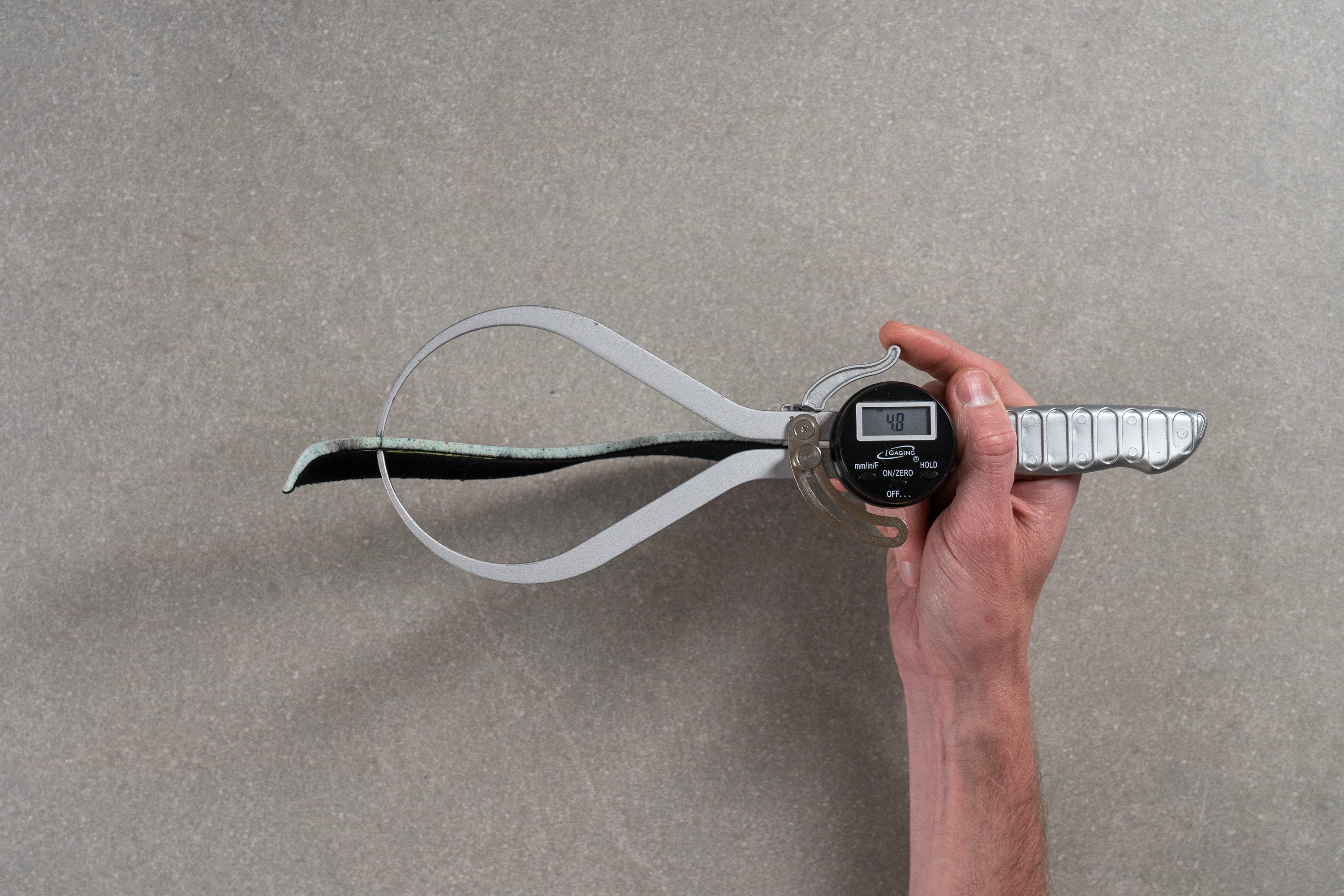
| Glycerin 21 | 4.8 mm |
| Average | 4.5 mm |
Removable insole
We discovered that the insole isn't attached to the last, allowing for easy swapping. Additionally, the stock insole is quite average, so replacing it with a different option is perfectly feasible.
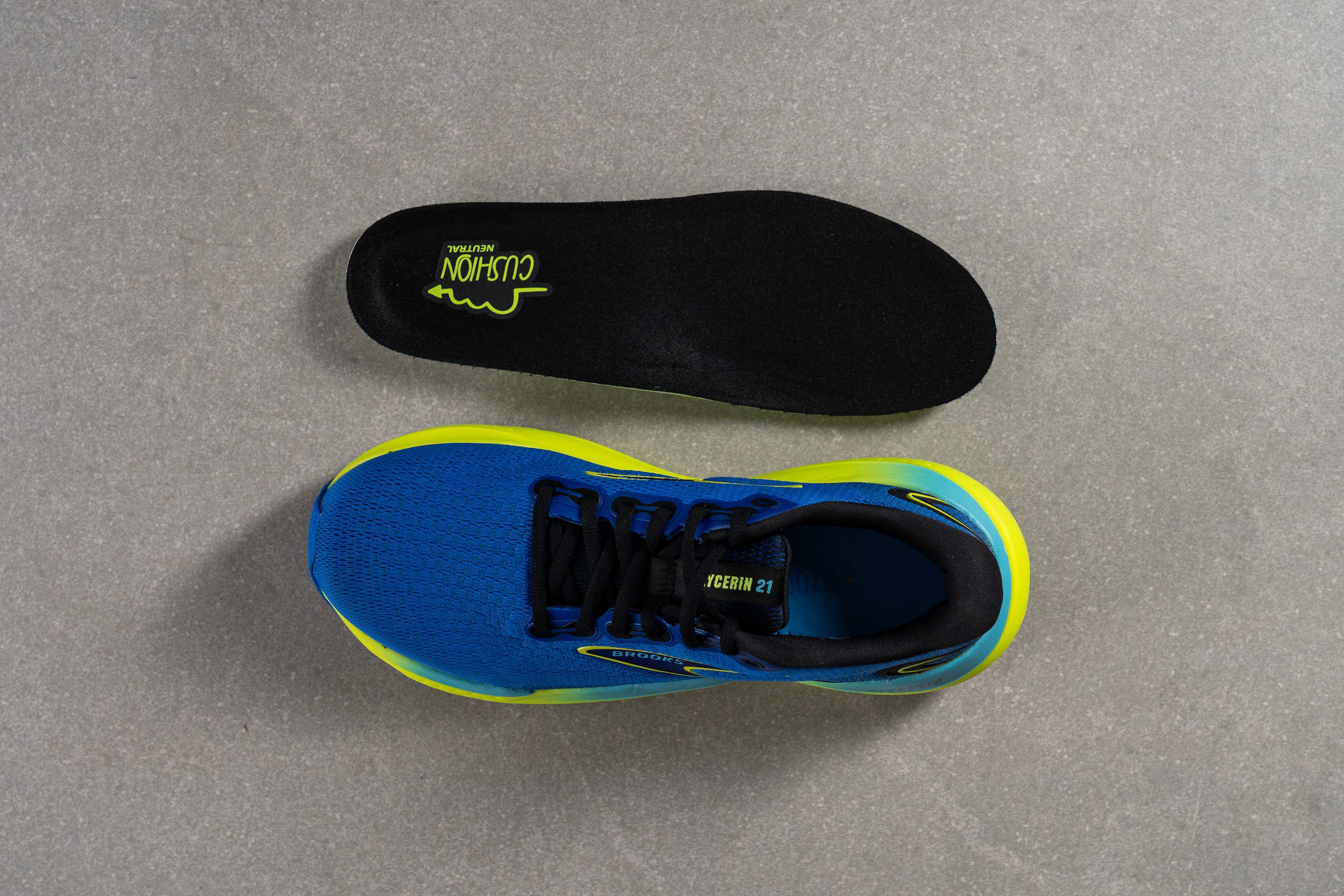
| Glycerin 21 | Yes |
Midsole softness in cold (%)
After placing the Glycerin 21 in the freezer for 20 minutes, we remeasured its softness using the durometer. Disappointingly, we found that it had increased by 36.8%—a significant and clearly noticeable change.
Unfortunately, this is a common drawback with EVA-based midsoles, which tend to lose their softness in colder conditions.
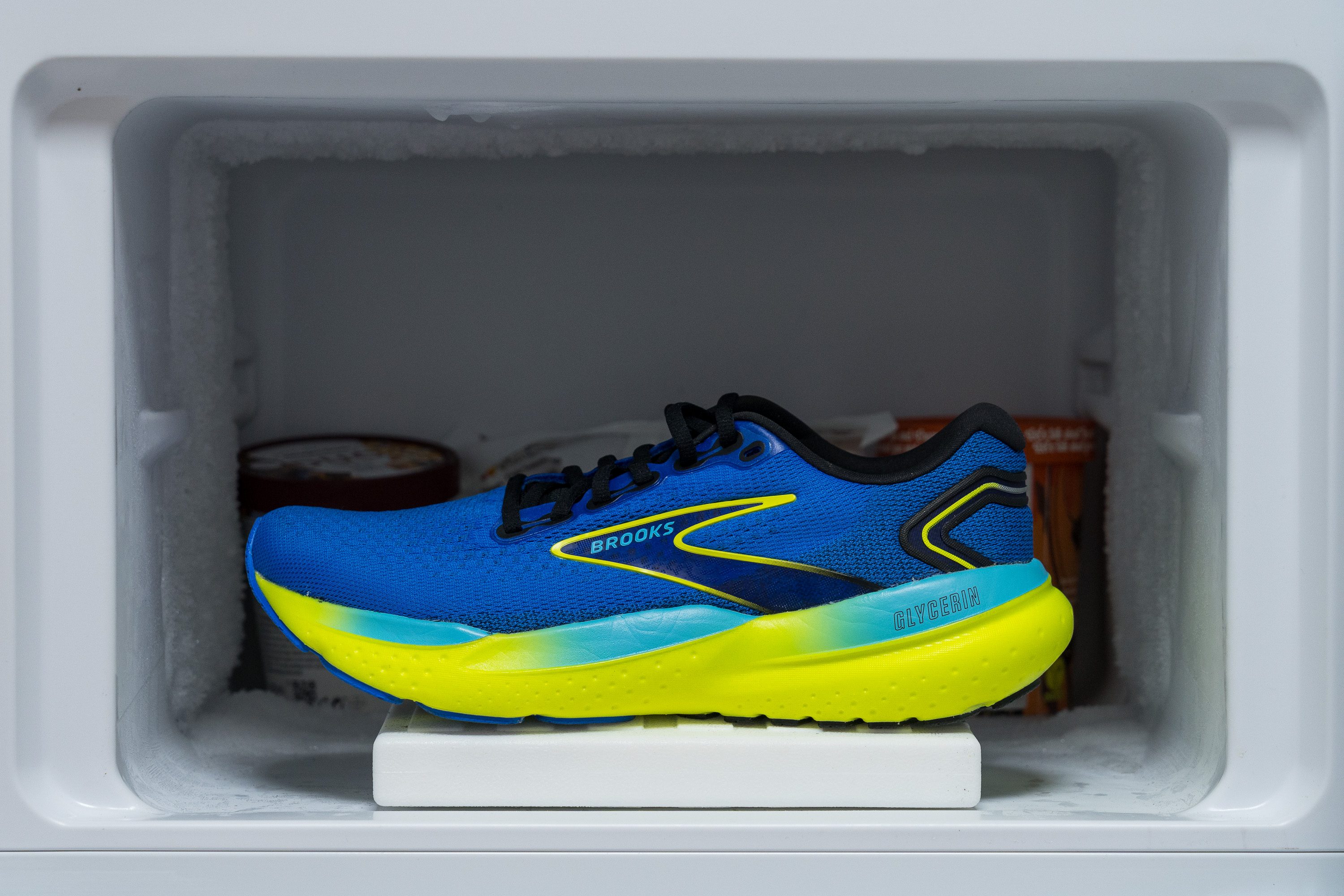
| Glycerin 21 | 37% |
| Average | 24% |
Reflective elements
We were quite disappointed to discover that the Glycerin 21 lacks any reflective elements—a feature we appreciate for safety during low-light runs.
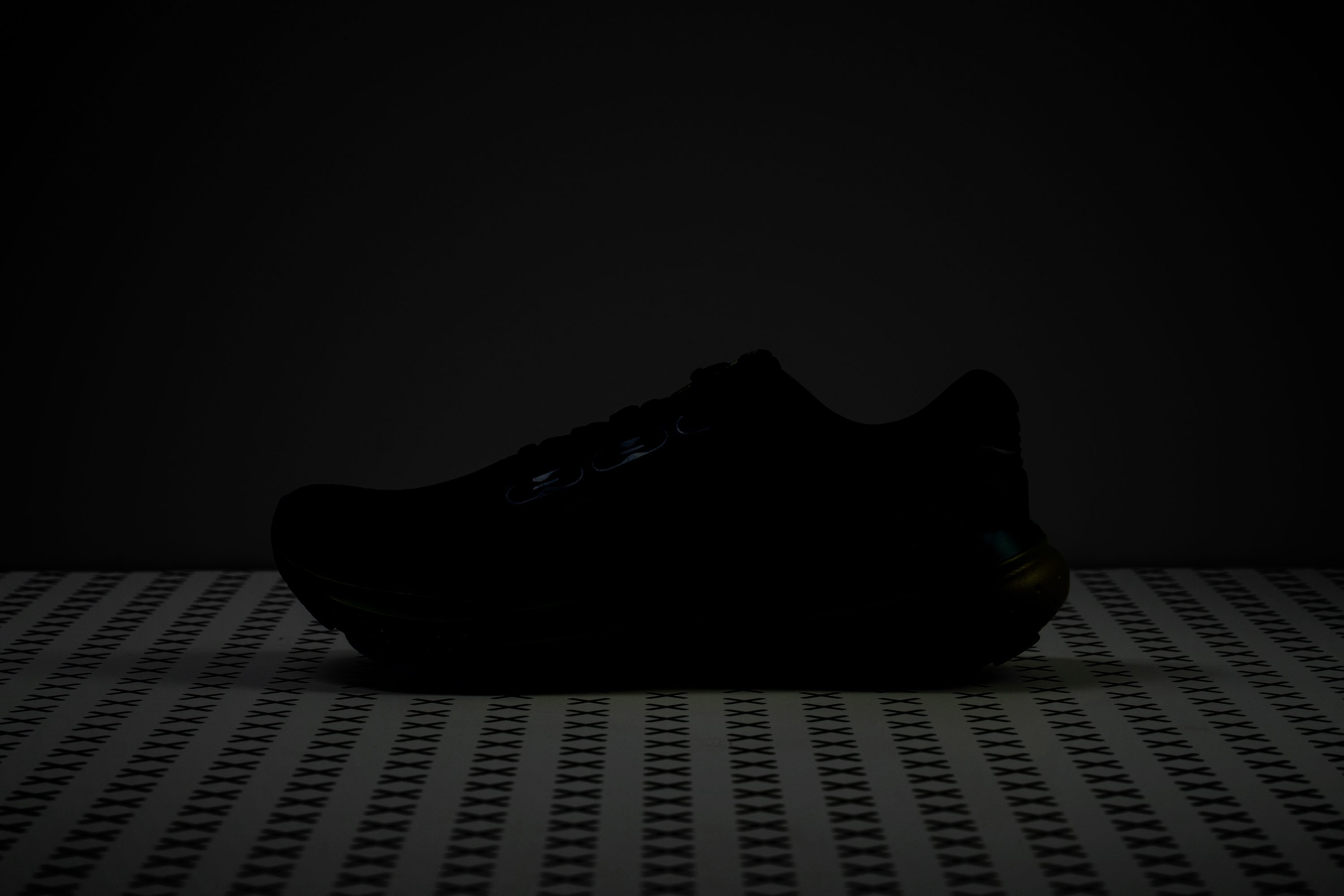
| Glycerin 21 | No |
Tongue padding
The tongue features exceptional padding—a main pillow-like foam flanked by a thinner layer. Altogether, we measured it at 11.5 mm—ideal for runners who prefer their laces ultra-tight, as this design accommodates that preference without the risk of lace bite.
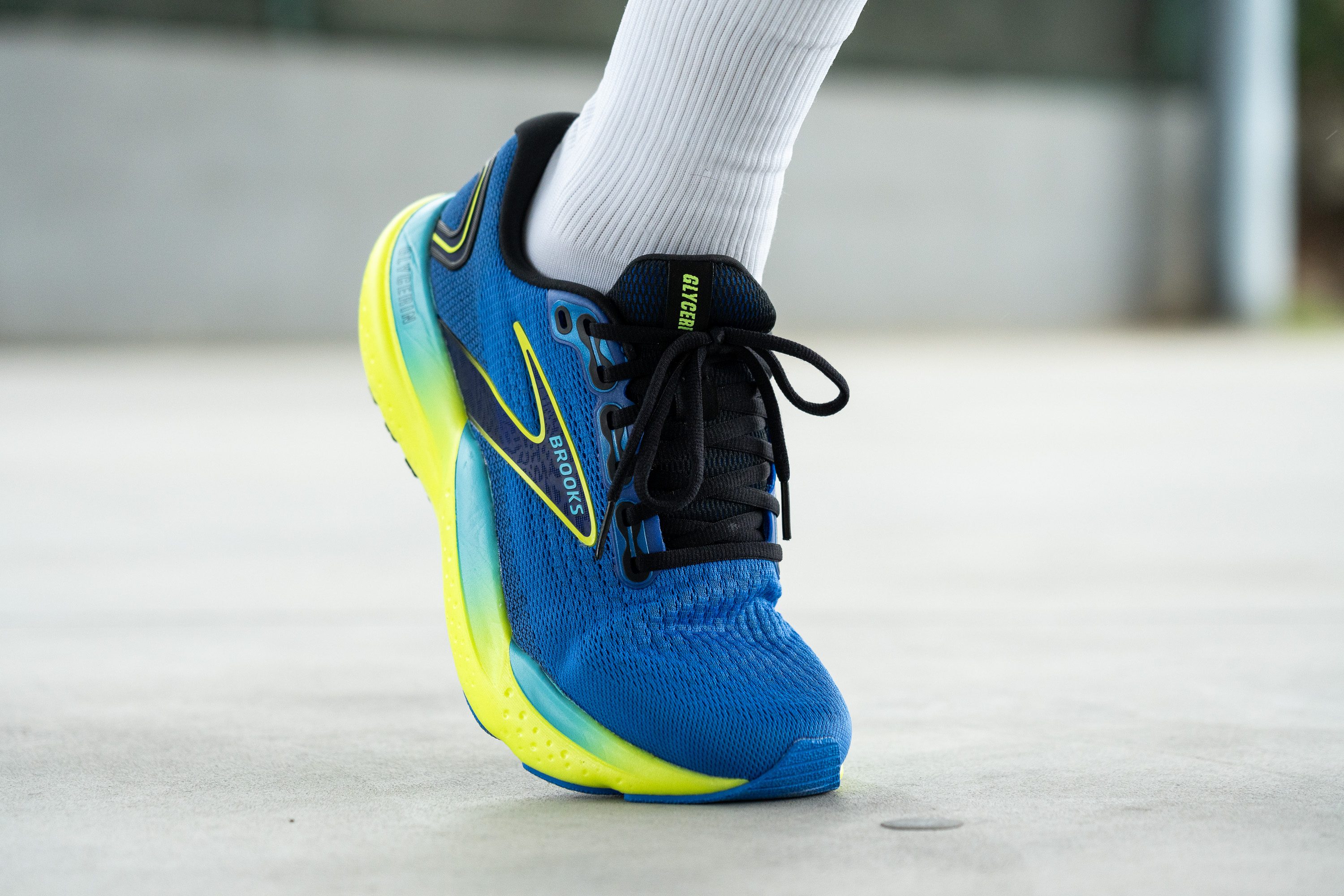
However, we feel that this might verge on excessive padding. A more streamlined design with just 7 or 8 mm could offer nearly the same level of comfort while also providing weight savings and reducing bulkiness.
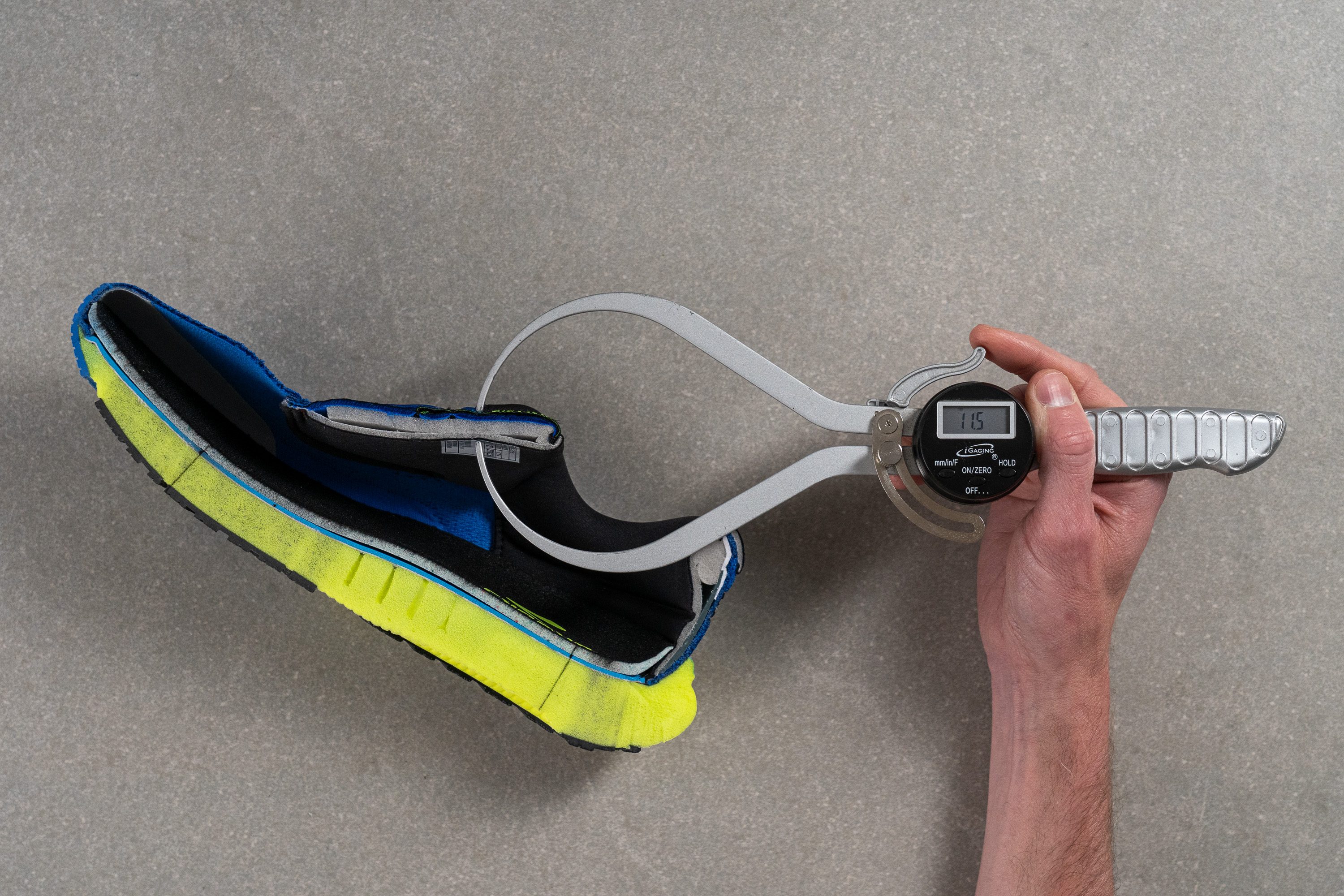
| Glycerin 21 | 11.5 mm |
| Average | 5.8 mm |
Tongue: gusset type
One improvement we hoped to see from the Glycerin 20 was a move away from the non-gusseted tongue.
Regrettably, the v21 sticks to the old design, which we consider a significant oversight. We firmly believe the Glycerin deserves a semi-gusseted tongue to enhance its fit and feel.

| Glycerin 21 | None |
Heel tab
It's clear that Brooks designers are not fans of heel tabs—the Glycerin 21 maintains the same heel design as its predecessors by omitting them.

| Glycerin 21 | None |

